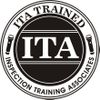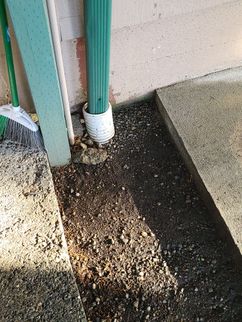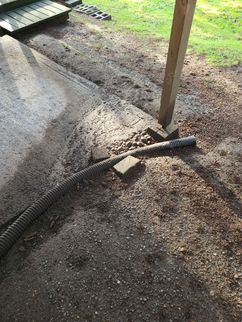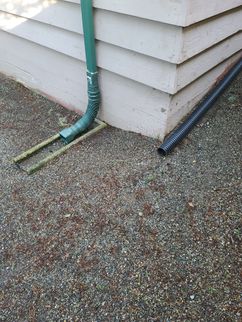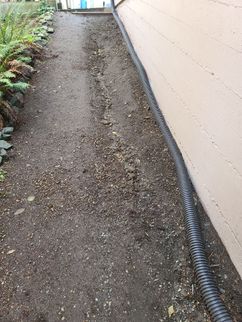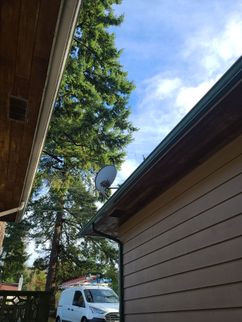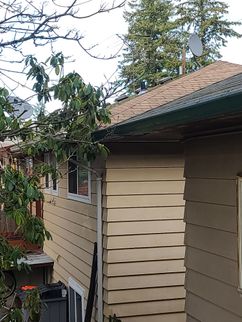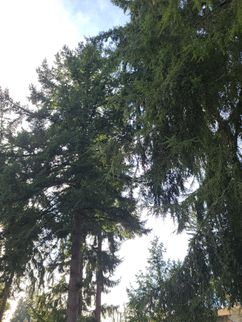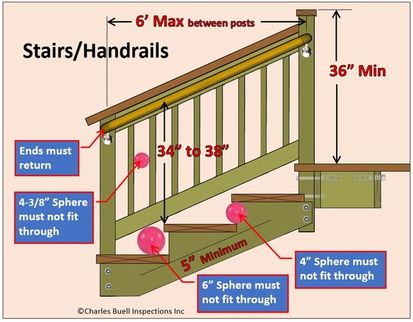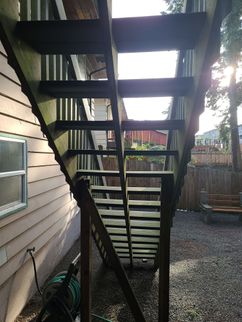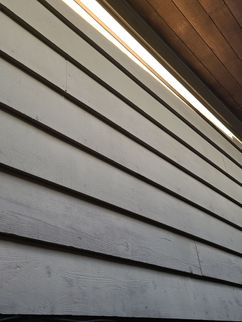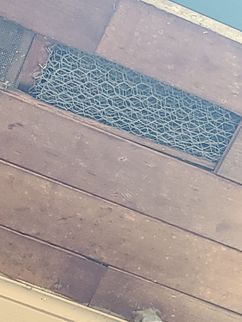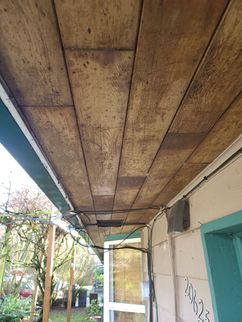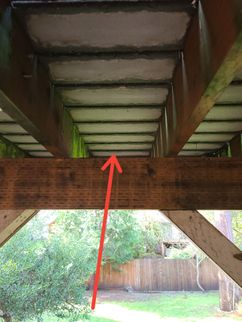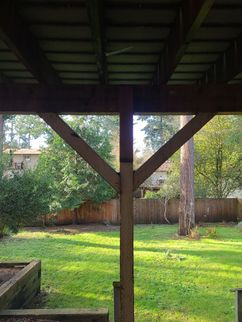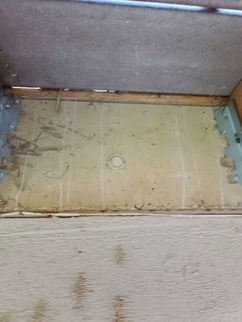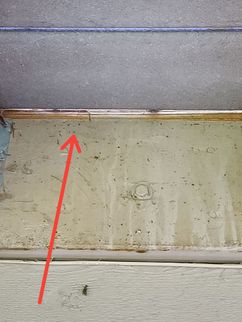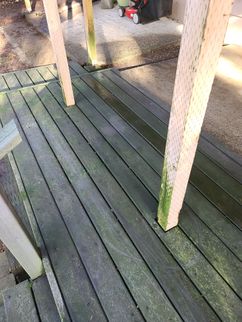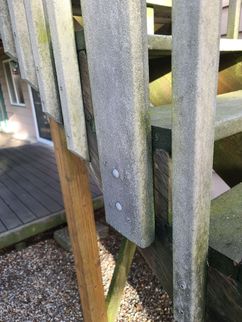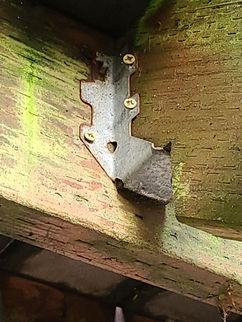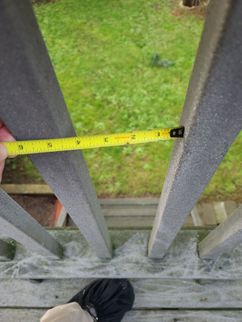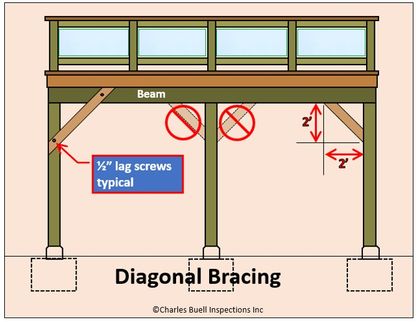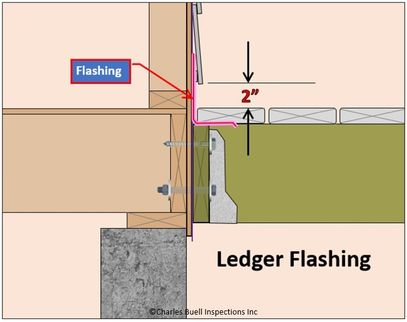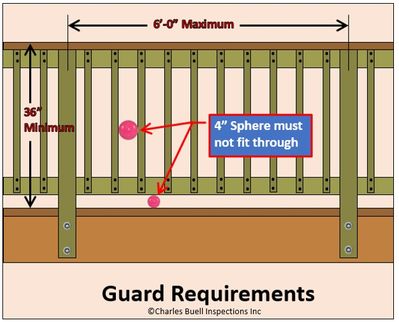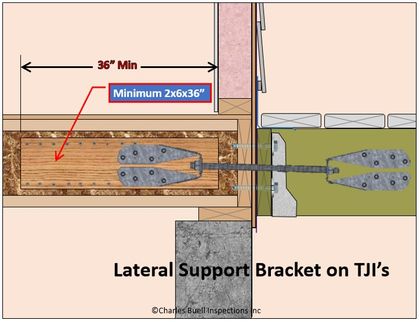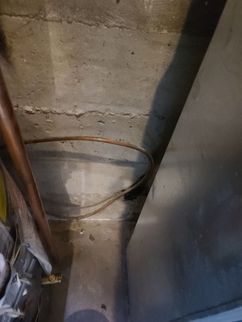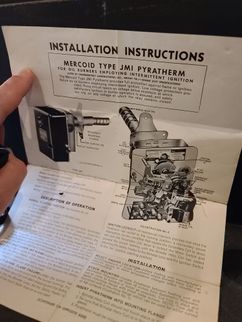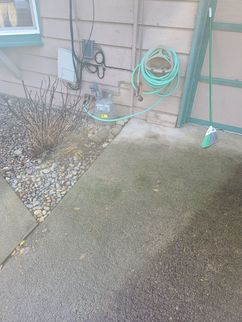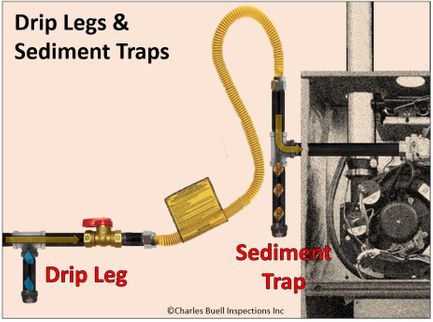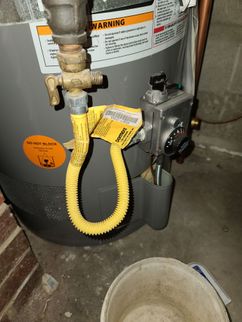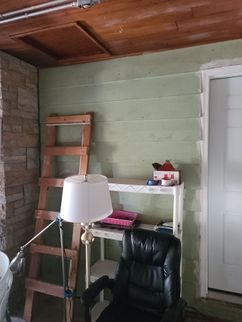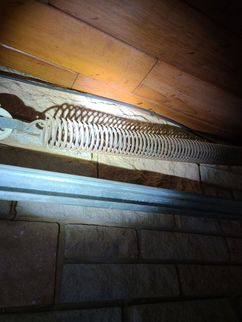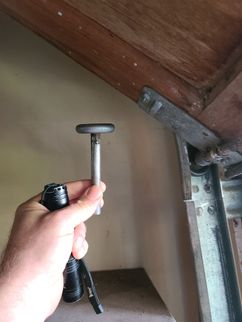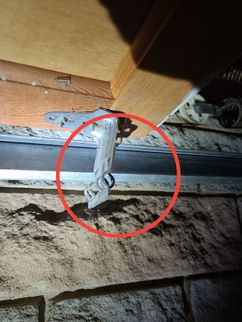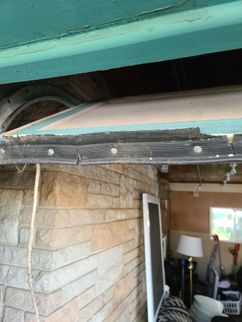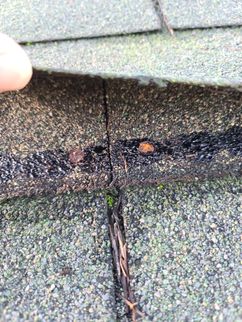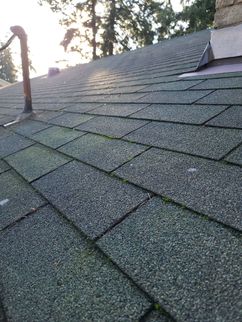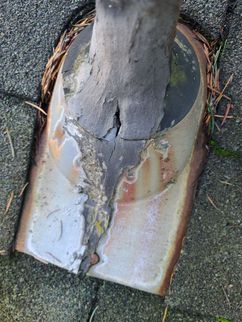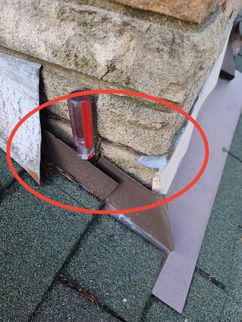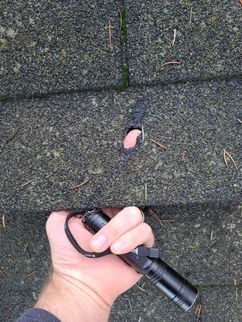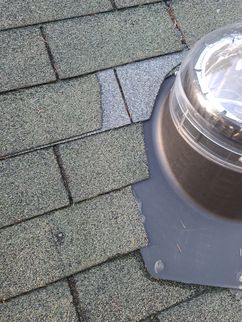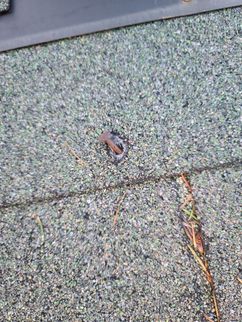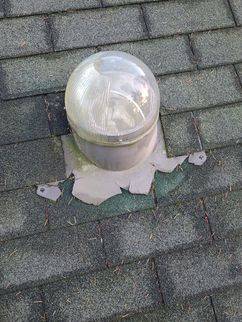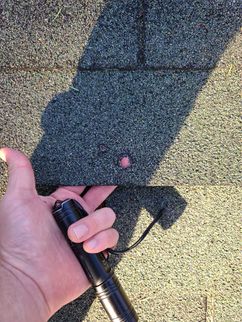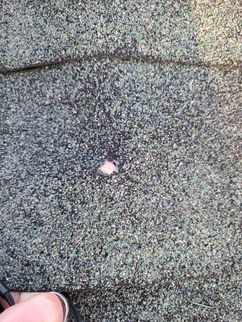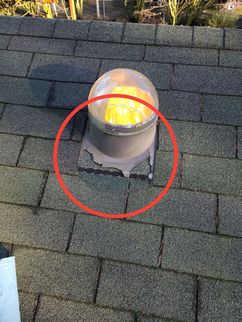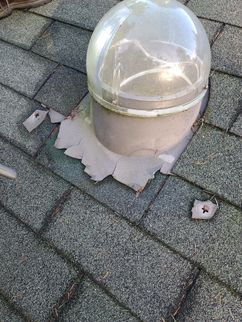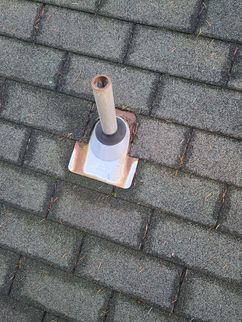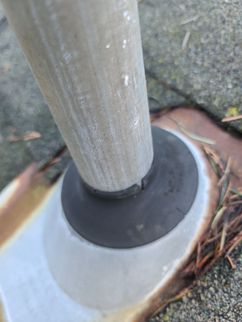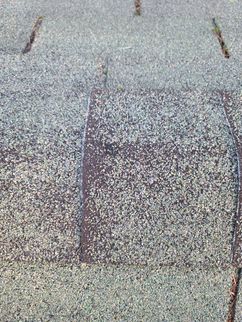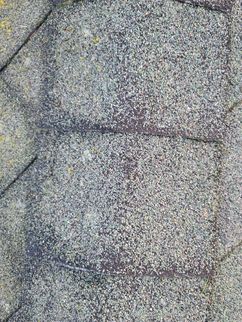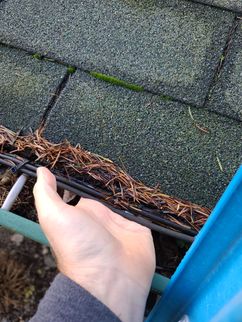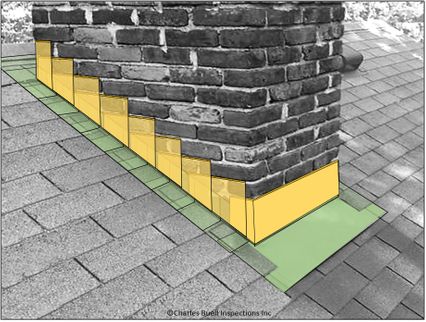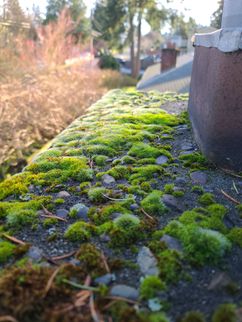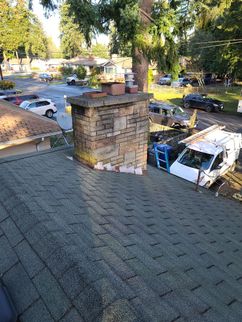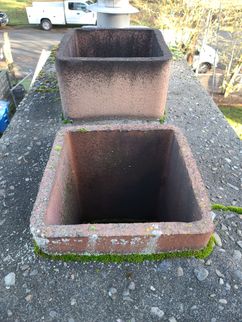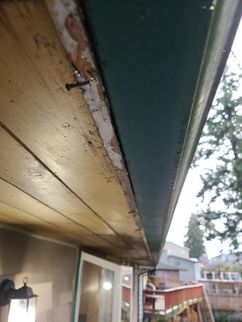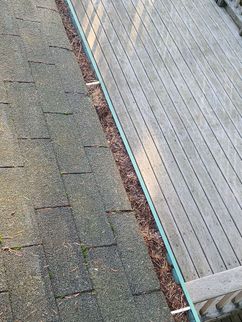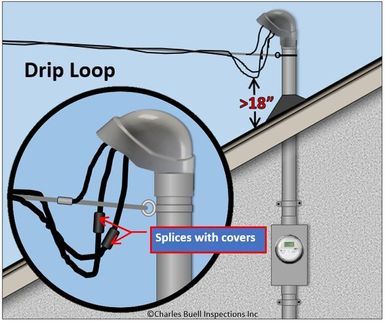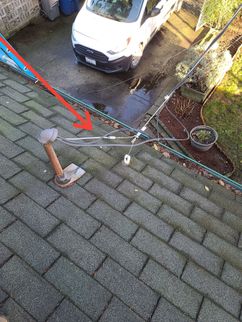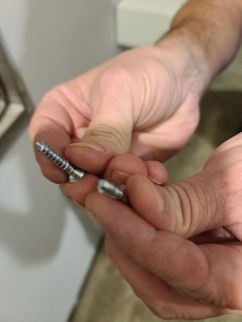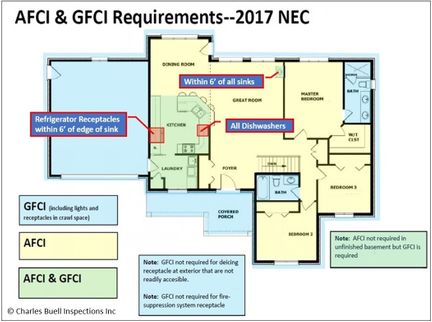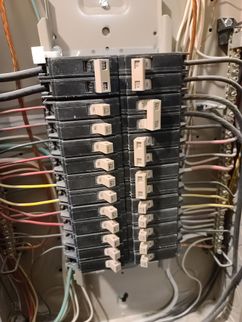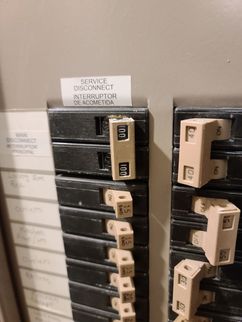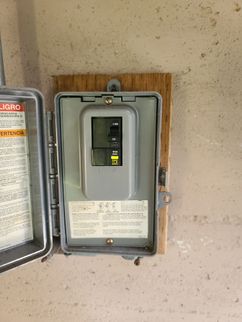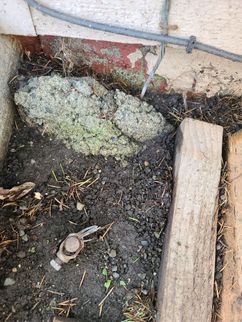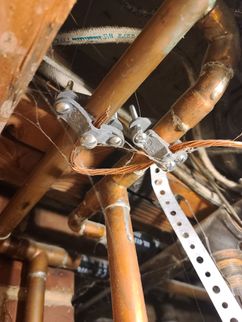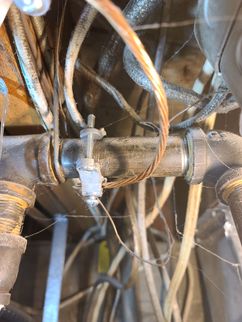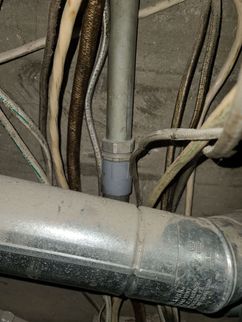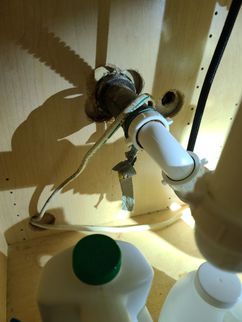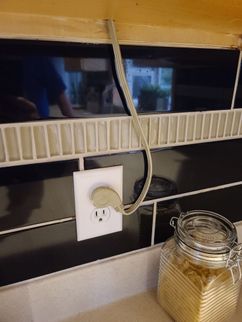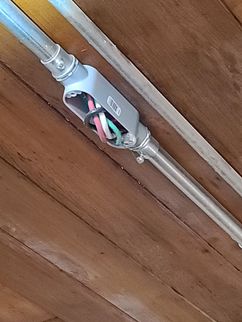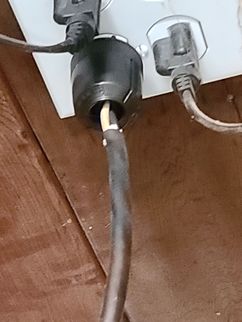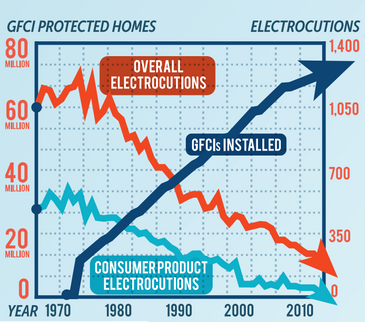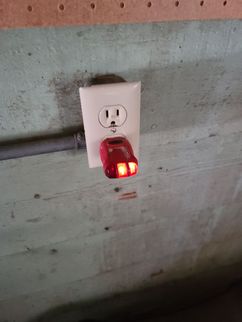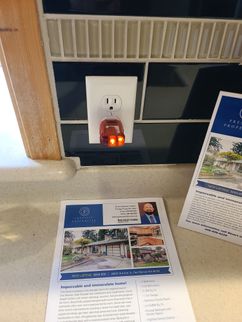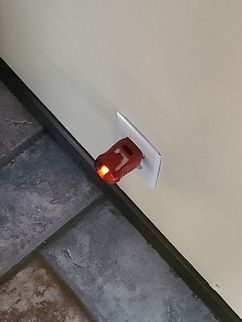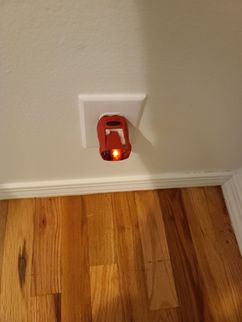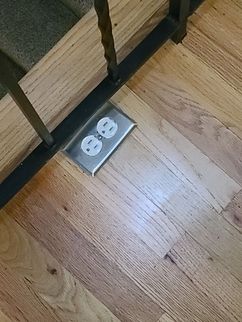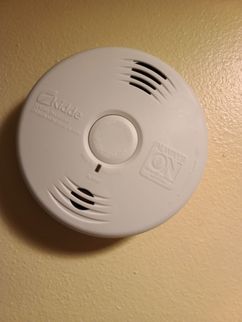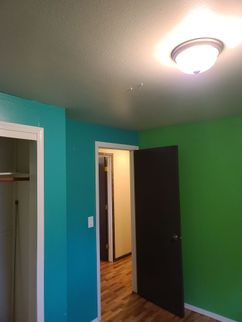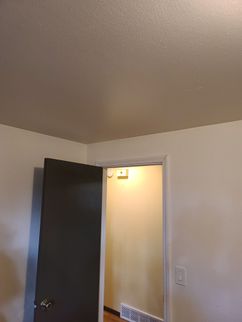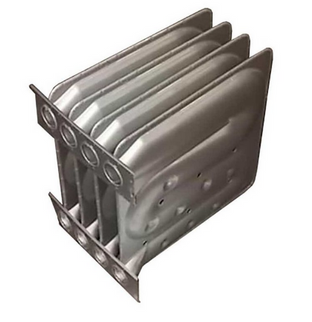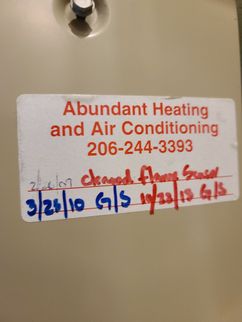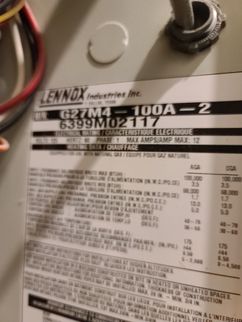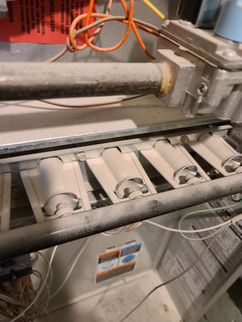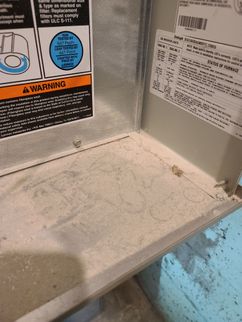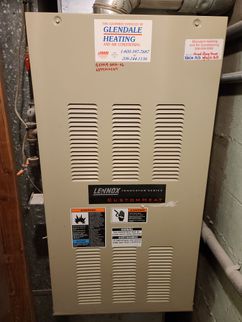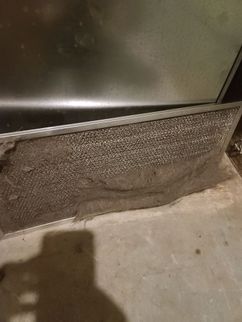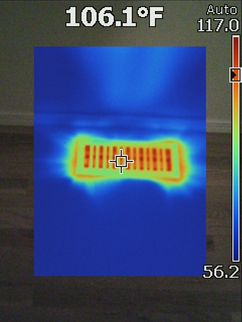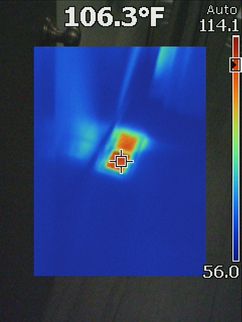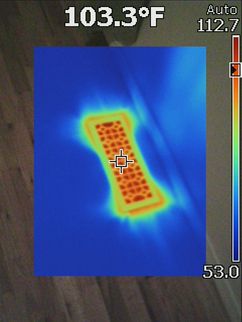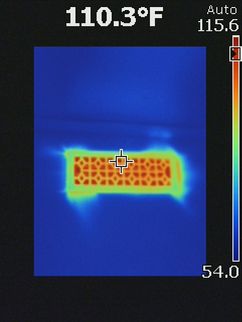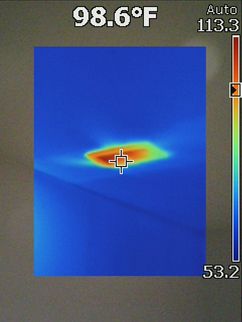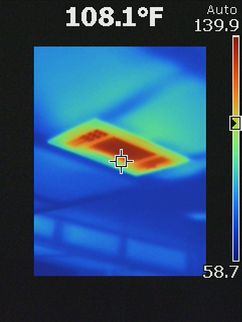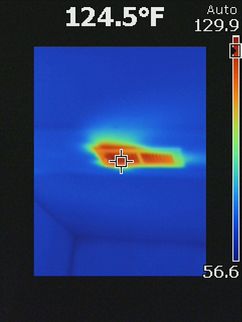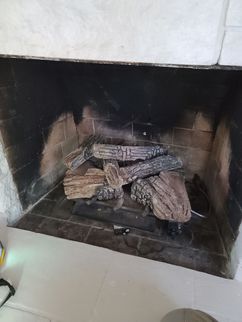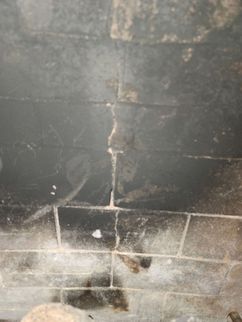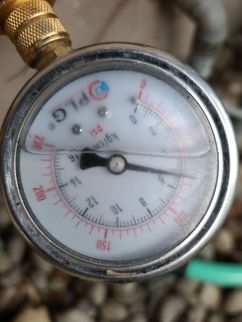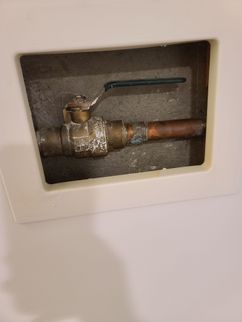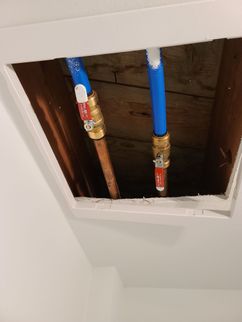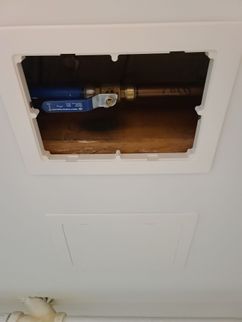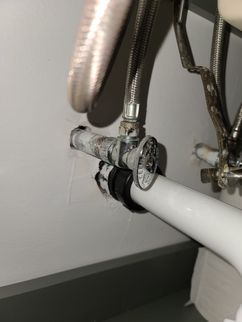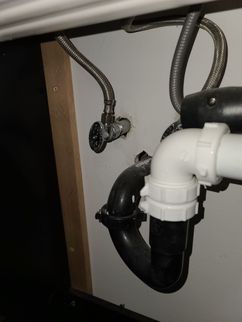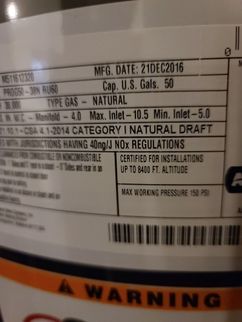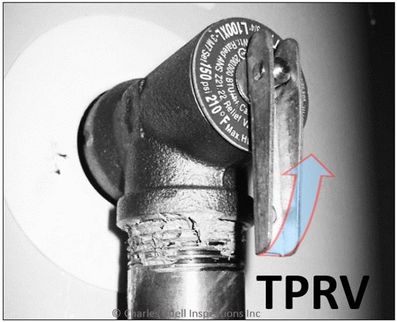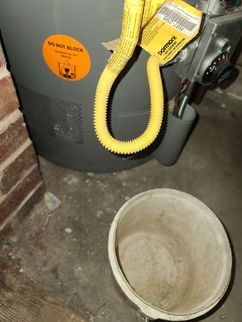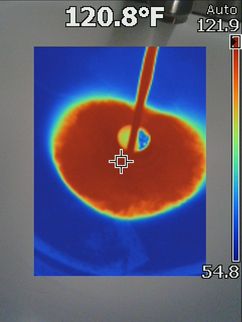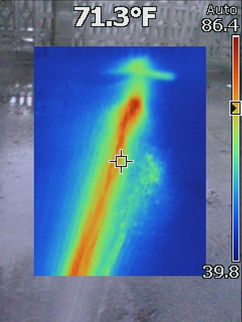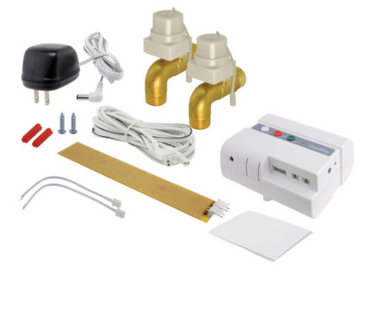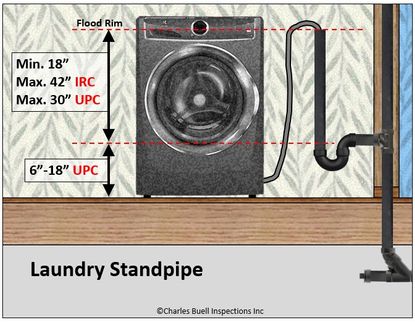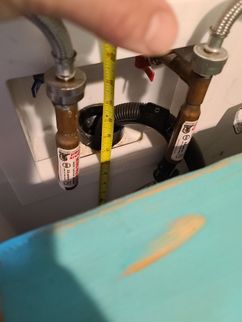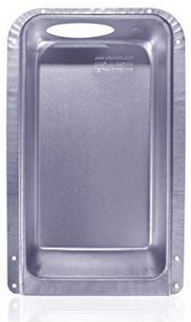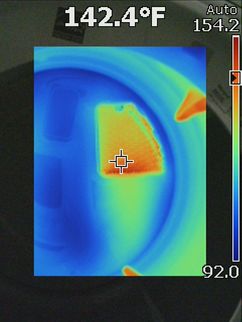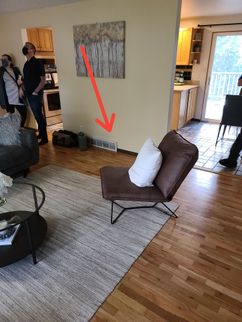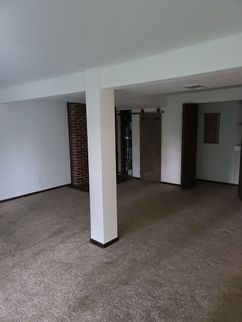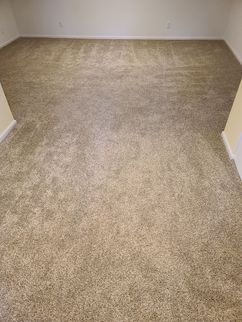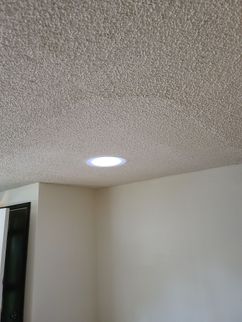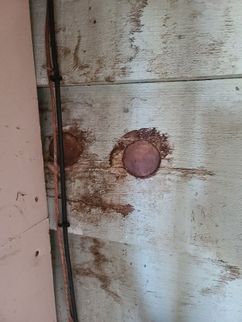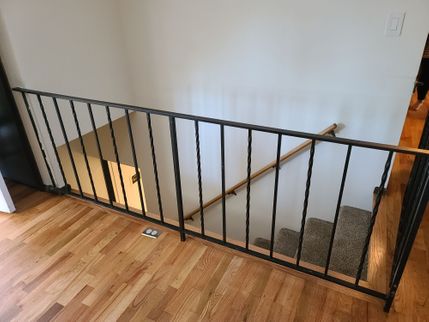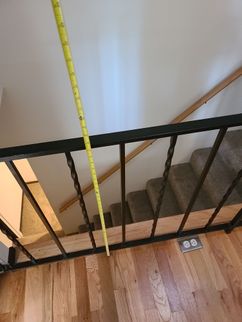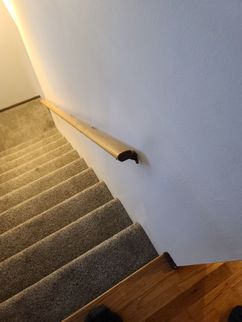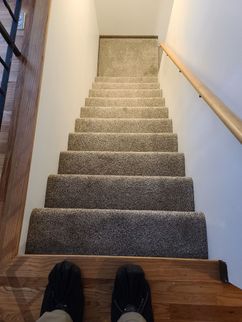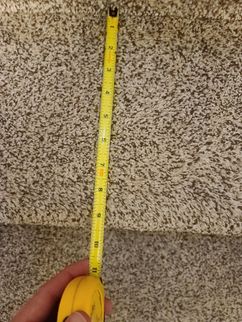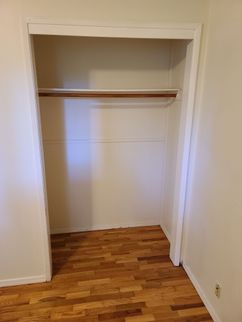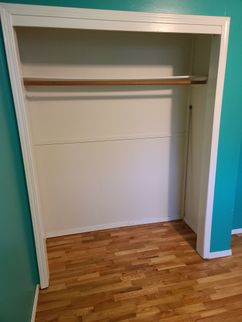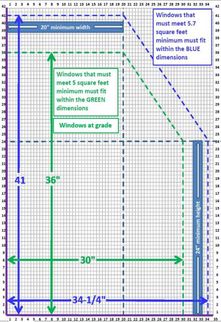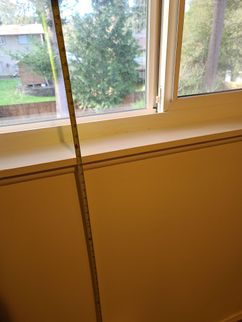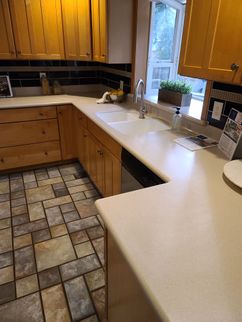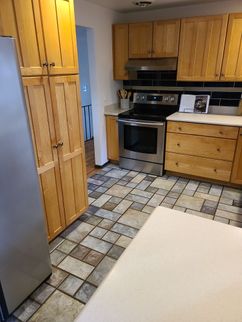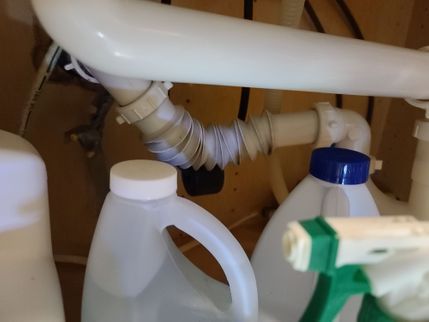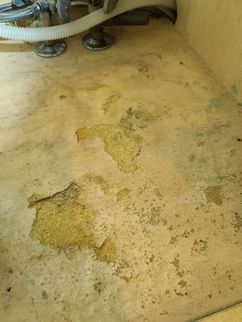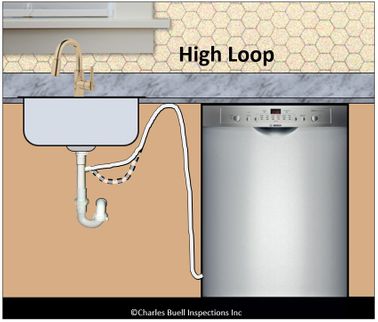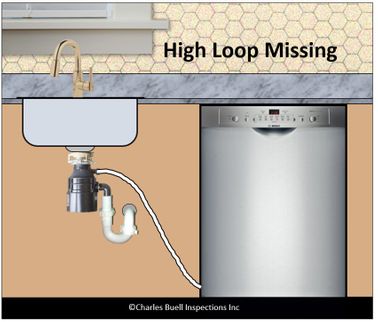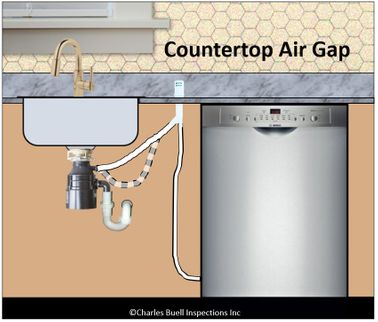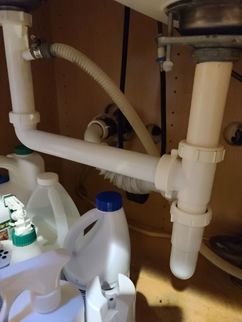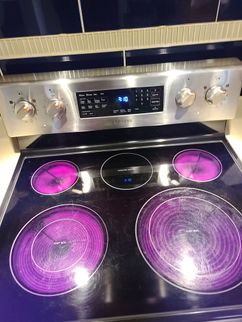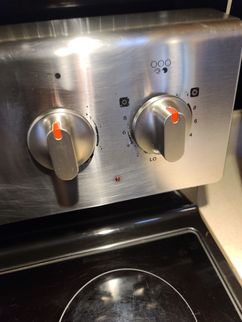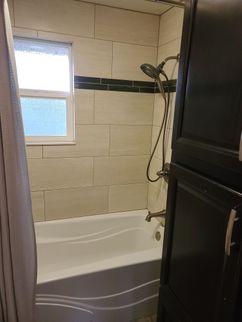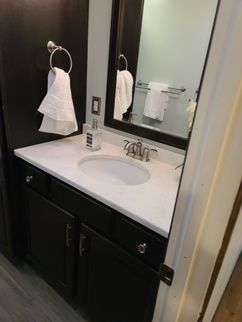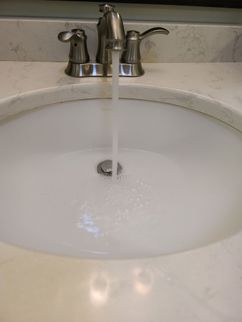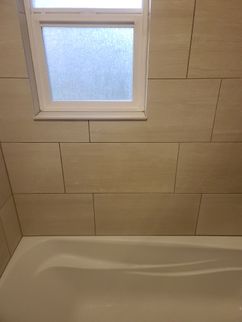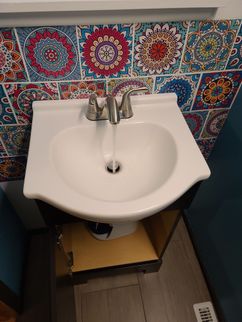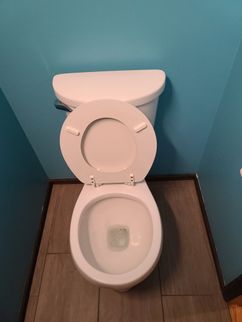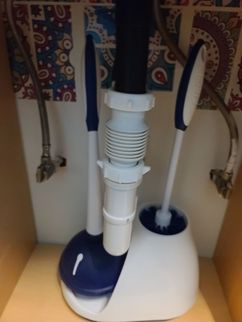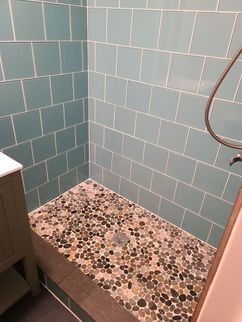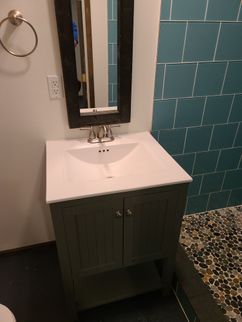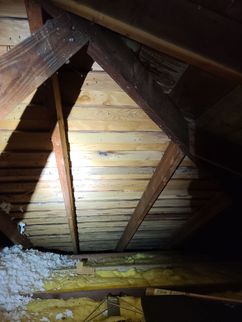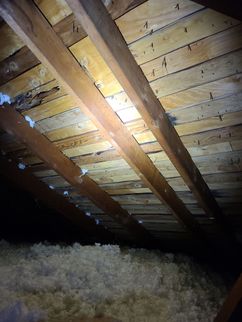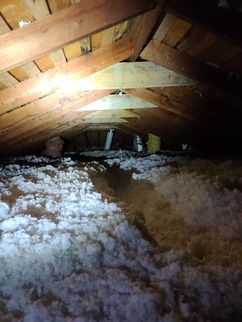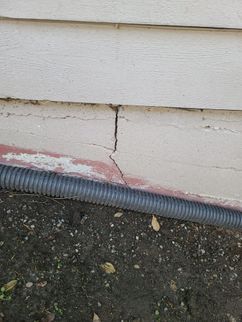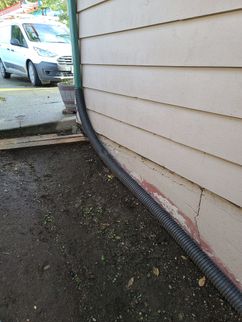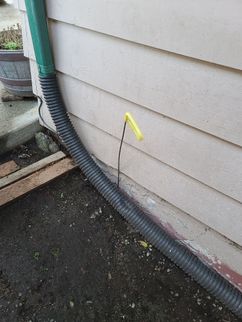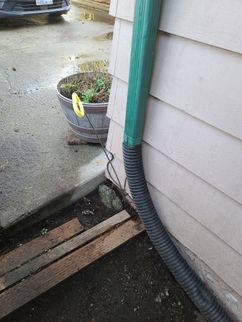The Scope and Purpose of a Home Inspection
Purchasing property involves risk
The purpose of a home inspection is to help reduce the risk associated with the purchase of a structure by providing a professional opinion about the overall condition of the structure. A home inspection is a limited visual inspection and it cannot eliminate this risk. Some homes present more risks than others. We cannot control this, but we try to help educate you about what we don’t know during the inspection process. This is more difficult to convey in a report and one of many reasons why we recommend that you attend the inspection.
A home inspection is not an insurance policy
This report does not substitute for or serve as a warranty or guarantee of any kind. Home warranties can be purchased separately from insuring firms that provide this service.
A home inspection is visual and not destructive
The descriptions and observations in this report are based on a visual inspection of the structure. We inspect the aspects of the structure that can be viewed without dismantling, damaging or disfiguring the structure and without moving furniture and interior furnishings. Areas that are concealed, hidden or inaccessible to view are not covered by this inspection. Some systems cannot be tested during this inspection as testing risks damaging the building. For example, overflow drains on bathtubs are generally not tested because if they were found to be leaking they could damage the finishes below. Our procedures involve non-invasive investigation and non-destructive testing which will limit the scope of the inspection.
This is not an inspection for code compliance
This inspection and report are not intended for city / local code compliance. During the construction process structures are inspected for code compliance by municipal inspectors. Framing is open at this time and conditions can be fully viewed. Framing is not open during inspections of finished homes, and this limits the inspection. All houses fall out of code compliance shortly after they are built, as the codes continually change. National codes are augmented at least every three years for all of the varying disciplines. Municipalities can choose to adopt and phase in sections of the codes on their own timetables. There are generally no requirements to bring older homes into compliance unless substantial renovation is being done.
This is just our opinion
Construction techniques and standards vary. There is no one way to build a house or install a system in a house. The observations in this report are the opinions of the home inspector. Other inspectors and contractors are likely to have some differing opinions. You are welcome to seek opinions from other professionals.
The scope of this inspection
This inspection will include the following systems: exterior, roof, structure, drainage, foundation, attic, interior, plumbing, electrical and heating. The evaluation will be based on limited observations that are primarily visual and non-invasive. This inspection and report are not intended to be technically exhaustive.
Your expectations
The overall goal of a home inspection is to help ensure that your expectations are appropriate with the house you are proposing to buy. To this end we assist with discovery by showing and documenting observations during the home inspection. This should not be mistaken for a technically exhaustive inspection designed to uncover every defect with a building. Such inspections are available but they are generally cost-prohibitive to most homebuyers.
Your participation is requested
Your presence is requested during this inspection. A written report will not substitute for all the possible information that can be conveyed verbally by a shared visual observation of the conditions of the property.
How to Read This Report
Getting the Information to You
This report is designed to deliver important and technical information in a way that is easy for anyone to access and understand. If you are in a hurry, you can take a quick look at our "Summary Page” and quickly get critical information for important decision making. However, we strongly recommend that you take the time to read the full Report, which includes digital photographs, captions, diagrams, descriptions, videos and hot links to additional information.
The best way to get the layers of information that are presented in this report is to read your report online (the HTML version), which will allow you to expand your learning about your house. You will notice some words or series of words highlighted in blue and underlined – clicking on these will provide you with a link to additional information. The HTML version of this report also contains streaming videos. Short video clips often contain important information and critical context and sounds that can be difficult to capture in words and still pictures.
For the most reliable viewing experience, I recommend viewing the report on as large a screen as practical, as much detail can be lost on small devices like smart phones. For similar reasons, reports should only be printed in color to retain as much detail as possible and minimize misinterpretation of photographs.
This report can also be printed on paper or to a PDF document.
Chapters and Sections
This report is divided into chapters that parcel the home into logical inspection components. Each chapter is broken into sections that relate to a specific system or component of the home. You can navigate between chapters with the click of a button on the left side margin.
Most sections will contain some descriptive information done in black font. Observation narrative, done in colored boxes, will be included if a system or component is found to be significantly deficient in some way or if we wish to provide helpful additional information about the system or the scope of our inspection. If a system or component of the home was deemed to be in satisfactory or serviceable condition, there may be no narrative observation comments in that section and it may simply say “tested,” or “inspected.”
Observation Labels
All narrative observations are colored, numbered and labeled to help you find, refer to, and understand the severity of the observation. Observation colors and labels used in this report are:
- Major Concern:Repair items that may cost significant money to correct now or in the near future, or items that require immediate attention to prevent additional damage or eliminate safety hazards.
- Repair:Repair and maintenance items noted during inspection. Please note that some repair items can be expensive to correct such as re-finishing hardwood floors, but are considered simply repair items due to their cosmetic nature.
- Recommended Maintenance:These are repair items that should be considered "routine home ownership items," such as servicing the furnace, cleaning the gutters or changing the air filters in the furnace.
- Improve or Upgrade:Observations that are not necessarily defects, but which could be improved for safety, efficiency, or reliability reasons. These are often items which reflect changes in building codes or standards.
- Monitor:Items that should be watched to see if correction may be needed in the future.
- Due Diligence:Observation such as a buried oil tank that may require further investigation to determine the severity and / or urgency of repair.
- Future Project:A repair that may be deferred for some time but should be on the radar for repair or replacement in the near future.
- Efficiency:Denotes observations that are needed to make the home more energy efficient as well as to bring the home up to modern insulation standards. This category typically includes windows and insulation. Other items, such as lighting and appliances, are not inspected for their energy status.
- Recommended Disclosure Items:These are observations for which we recommend that sellers disclose more information to buyers so that buyers can better understand recent servicing, repairs or maintenance or even construction history or building and site design.
- Inspection Notes and Limitations:Refers to aside information and /or any comments elaborating on descriptions of systems in the home or limitations to the home inspection.
- Description:Detailed description of various aspects of the property noted during the inspection.
Pest Inspection
All items with the bug logo () are part of a structural pest inspection. If your inspector included a structural pest inspection as a part of the scope of your home inspection, you can distinguish pest inspection items by this logo. You can also go to the pest inspection summary page to see a summary of the items that are part of a pest inspection.
Summary Page
The Summary Page is designed as a bulleted overview of all the observations noted during inspection. This helpful overview is not a substitution for reading the entire inspection report. The entire report must be read to get a complete understanding of this inspection report as the Summary Page does not include photographs or photo captions.
Moisture Meter Testing
Where moisture meter testing is indicated in this report a Protimiter Survey Master Dual Function was used.
Summary
Major Concerns
- RCG2-1 Roof, Chimney and Gutters:
This roof is done in a three tab composition shingle. The roof looks to be in the last phase of its reliable service life. Roof repairs are needed if this roof is to be reliably kept in service. Examples of specific observations noted during inspection include:
- Nails used - should not be in the tar strip - cannot correct at this point but could impact long-term performance.
- No curling or cupping noted - this is good.
- The flashing around the electric mast is damaged and vulnerable to leaks.
- Missing counter flashing south side of masonry chimney - this is vulnerable to leaks
- Hole in shingle - north side.
- Prior repairs noted to the entry-side light tube - looks like a new skylight here.
- Nail pop - leak point - south side.
- Deteriorated apron flashing around the bubble style skylights on the back side of the house
- Hole in the shingles at the south side from an old nail pop.
- Hole noted in the hip roof at the southwest corner
- Corrosion on the apron of the plumbing vent flashings
- Rubber flashing starting to break down at the plumbing vent flashing
- Granule loss on some of the ridge shingles.
- No drip edge flashing was noted for the roof - these are now required. This will have to be done during the next re-roof.
Recommendation
Hire a qualified roofing contractor to further evaluate and repair or replace this roof as recommended to ensure reliable performance.
- EDFW1-1 Electric Distribution and Finish Wiring:
Overall, numerous defects and red flags were noted in the wiring system indicating unreliable and incomplete wiring practices. I recommend additional inspection and repair of the entire wiring system by a licensed electrical contractor as additional repairs could be needed that are latent or concealed. This should be considered urgent for safety reasons. Examples of observations and defects found during inspection are included in the Electric chapter.
- HCFV-1 Heating, Cooling, Fireplaces and Ventilation:
This gas forced air furnace is close to the end of its useful design life. The average service life of natural gas and propane forced air furnaces is 15-20 years - this unit is from 1999. Funds should be reserved to replace this furnace at any time.
The risk of running a gas forced air furnace past its useful design life is that the furnace could continue to operate with a cracked heat exchanger. This is a safety hazard that can allow products of combustion enter the supply air to the home. Furnace heat exchangers are not visible to inspection without expensive diagnostics, so is it difficult to know when the furnace could be posing a safety hazard to the occupants. Older furnaces like this are also less reliable and subject to the need for constant repairs. It can be more cost-effective to simply replace these furnaces on a 20 years schedule. Examples of specific observations noted and testing procedures done during inspection include:
- The furnace was dirty at the time of inspection and no recent service records were noted.
- The super dirty air filter needs to be cleaned. Clogged filters such as this risk over-heating the heat exchanger.
I recommend having this furnace serviced and the heat exchanger inspected by a qualified heating contractor. If this furnace is kept in service, keep it on a regular service schedule and budget to update at any time and install carbon monoxide alarms in the home. Standards for CO alarms are 1 / floor and 1 outside all sleeping areas.
Repairs
- G-3 Grounds:
Additional provisions for drainage and moisture control may be needed around the exterior of the house - see especially on the north side where runoff from the driveway is running down the side of the building site. Implement additional repairs as needed.
- G-6 Grounds:
The stair treads have openings between the treads that are larger than 4-inches. This could be a safety hazard for children. Standards recommend openings in stair treads similar to guardrails - no more than 4 inches. Have this further investigated and repaired by a qualified general contractor.
- ED1-1 Exteriors and Decks:
Repair the missing wood at the eaves on the north side.
- ED1-3 Exteriors and Decks:
A failed insulated glass unit (IGU) was noted in one of the exterior doors - west side deck - the sliding glass door This is when the glass has a cloudy appearance from condensation between the panes of glass. This cannot be cleaned, so the IGU needs to be replaced. This is a cosmetic defect that does not significantly impact the performance of the glass just the appearance. Hire a glass replacement company to further evaluate this glass and replace as needed.
- ED1-4 Exteriors and Decks:
Overall, a number of repairs are needed to the decking systems on this house to ensure safe and reliable performance. I recommend additional inspection and repair of these decks by a qualified general contractor. Examples of red flags and defects noted during inspection include:
- These types of braces are not recommended in the middle posts.
- The ledger should have bolts at the upper and lower portions of the ledger board - not just the middle of the board.
- No ledger flashing was noted - flashings can be critical for preventing moisture from getting behind the ledger
- The base of the deck posts are not visible to inspection.
- Guard posts are required to be minimum 4x4 - these are surprisingly stiff even if not technically correct.
- Decking screws are not approved for joist hangers.
- The guardrail openings are larger than the 4-inches recommended today. This can pose a safety hazard for small children. These are about 4.5 inches.
- The deck joists are missing lateral bracing at the load points at the beam - this is now required. This would be an improvement item on an older deck.
- FSD-3 Fuel Storage and Distribution:
The gas meter is close to a driving surface. A bollard is recommended so that cars can not accidentally drive into this meter. Another option is re-location of the meter. I recommend additional inspection by the utility - protect this gas meter as recommended to ensure safe performance.
- FSD-4 Fuel Storage and Distribution:
No sediment trap was found for the gas pipe at the gas water heater. Sediment traps are designed to prevent fouling of gas equipment by allowing sediment to fall out of the gas supply. Have this further evaluated and repaired as recommended by a qualified plumber. Sediment traps are required at all automatically controlled gas appliances.
- G2-4 Garage:
I recommend servicing the overhead garage door. The door is missing a wheel which could present a safety hazard. I also noted damaged weather strip at the garage door. Implement repairs or update this old door as needed.
- RCG2-3 Roof, Chimney and Gutters:
Organic growth was noted on the masonry chimney. This can be bad for the chimney and trap water in the masonry and hasten deterioration of brick and mortar. Consult with a qualified mason about options for cleaning and sealing the chimney and repairing failing mortar or sealing any cracks as needed.
- RCG2-5 Roof, Chimney and Gutters:
A rain cap and spark arrestor is recommended for the chimney flue to prevent water damage inside the flue, to reduce risks of bird and insect entry into the flue and to reduce risks from sparks exiting the flue.
- RCG2-6 Roof, Chimney and Gutters:
The gutters are clogged with organic debris and require cleaning and an all-around tune-up as multiple places were noted where gutters and downspouts are leaking and not sloped to drain. Clean the gutters and implement tune-up repairs to ensure they are unobstructed, well fastened, leak free and sloped to drain.
- ES1-1 Electric Service:
The electric service drop is missing a proper drip loop - see how tight the neutral is. A drip loop is designed to prevent water from entering the electric service mast. Hire a licensed electrical contractor to install a proper drip loop for the electric service entrance conductors to ensure the water does not run into the mast from the conductors.
- ES1-2 Electric Service:
Screws with sharp ends, like wood screws, are not recommended to secure the dead-front cover to the electric panel as these can puncture wiring insulation. This is a potential safety hazard. Replace the current sharp screws with the correct blunt screws that work correctly with this panel.
- EDFW1-2 Electric Distribution and Finish Wiring:
The front doorbell is inoperative and requires repair.
- EDFW1-3 Electric Distribution and Finish Wiring:
The electrical wiring behind the gas forced air furnace appears to be in contact with the metal B vent for the furnace. This could lead to a dangerous overheating condition. Have this further evaluated and repaired as recommended by a qualified general contractor. additional support or bracing may be able to move the wiring so it is sufficiently clear of this metal pipe
- EDFW1-4 Electric Distribution and Finish Wiring:
Abandoned wiring was noted below the kitchen sink. This should be eliminated or properly terminated inside a listed junction box. It is often not feasible to determine if wire is still connected to a power source. I can test these with a voltage sensor, but they could be shut off by a switch or temporarily disconnected. For safety, all abandoned wires should be eliminated.
- EDFW1-5 Electric Distribution and Finish Wiring:
The wiring for the cooktop fan is just a plug and has been run through the cabinet. This is non-standard and not recommended.
- EDFW1-6 Electric Distribution and Finish Wiring:
The electrical conduit has a missing cover - replace the missing cover for improved safety - see garage.
- EDFW1-7 Electric Distribution and Finish Wiring:
Non-metallic sheathed cable wiring should not be installed with a plug into a receptacle - see garage lighting. This wiring is designed to be hard-wired with terminations inside listed junction boxes. The wiring should be repaired to eliminate this configuration. See kitchen sink disposer.
- EDFW1-8 Electric Distribution and Finish Wiring:
The use of GFCI (Ground Fault Circuit Interruption) protection is inconsistent with modern minimum standards for safety. GFCI protection is recommended for the electrical receptacles in the following locations: the two dedicated kitchen appliance circuits, all receptacles within 6 feet of a sink, bathrooms, exterior, garage, unfinished basements, laundry and all wet and damp locations. GFCI's protect against electrocution by limiting the duration of an electrical shock. These are an important modern safety feature that have proven to save lives. Hire a licensed electrician to further evaluate and update GFCI protection for improved safety. Examples of observations noted during inspection include:
- EDFW1-9 Electric Distribution and Finish Wiring:
Hire a licensed electrician to eliminate all open grounds. This is a common condition in older buildings (prior to 1962) where three prong receptacles have been installed on an older two wire system. This creates a safety hazard as it is false advertising; appliances that rely on an equipment ground to discharge a fault can be plugged into ungrounded circuits. This disables the important safety feature of an equipment ground. Proper repair can include:
- Running an equipment grounding conductor or a new three-wire circuit
- Filling the third prong of the receptacle or restoring a two-prong receptacle or
- Installing GFCI protection for this circuit and labeling the open ground receptacles
If GFCI protection is used, the outlets on this circuit should be labeled so it is clear they are protected. Examples of locations where open grounds were found include:
- Open ground and no GFCI - laundry
- Open ground - dining room
- Open ground noted at the east bedroom
- EDFW1-10 Electric Distribution and Finish Wiring:
The floor receptacles are not listed for floor use. Wall outlets should not be used in the floor as they are susceptible to physical damage - a potential safety hazard. Have these receptacles replaced with a listed floor outlets.
- EDFW1-12 Electric Distribution and Finish Wiring:
Modern standards recommend smoke alarms in all bedrooms, in all hallways outside bedrooms and at least one on each floor of the building. At the time of inspection smoke alarms were incomplete in the bedrooms.
- HCFV-3 Heating, Cooling, Fireplaces and Ventilation:
This house has an older gas log fireplace. This is not a very energy efficient unit. The pilot light was out during inspection and the unit was dirty and inoperative. Have this unit serviced and repaired or updated as recommended by a specialist. If you wish to keep this older style of fireplace, I recommend installing glass doors to act as a flue damper as the old metal flue damper must be left open.
- HCFV-4 Heating, Cooling, Fireplaces and Ventilation:
Cracked brick were noted in the back wall of the fireplace firebox. This can make the fireplace unsafe for fires, especially if converting back to a wood burning fireplace. Hire a mason or chimney sweep to further evaluate this condition and repair as needed to insure safe and reliable performance from the fireplace. Firebox repairs need to be made using firebrick and proper refractory mortars designed for high temperatures.
- P-7 Plumbing:
No drain pan has been installed below the water heater here. A drain pan is recommended under water heaters that are located in finished spaces or where a leak could damage finishes. Where a pan does not already exist, the tricky part is providing a drain to the outside. A pan without a drain is often of limited benefit / protection. For improved protection from accidental water heater leaks, and where a drain is difficult to install, consider a pan with a moisture alarm and a flood-safe device such as this: Watts Water Heater Leak Prevention.
- LAP-2 Laundry and Additional Plumbing:
The stand pipe for the clothes washing machine is too short - it should be at least 18-inches - UPC and not exceed 30-inches. Have this waste pipe further investigated and repaired by a licensed plumber during other plumbing repairs.
- I-7 Interior:
The closet doors are missing - see the main bedroom. This is discretionary and some people prefer to use hangings or leave them open. Install missing doors as desired / needed.
- K-2 Kitchen:
Corrugated waste pipe was used to drain the kitchen sink. This in an unlisted plumbing product. Use smooth wall pipe only. Hire a licensed plumber to further evaluate and repair as needed - this is an odd configuration that looks almost like double-trapping.
- K-3 Kitchen:
Repair or replace the water damaged base of the kitchen cabinet below the kitchen sink.
- K-4 Kitchen:
An air gap is recommended to protect the dishwasher from accidental contamination if the sewer line were to back up. If an air gap cannot be installed, at least run the drain line above the level of the sink drain to create a high loop. This was an older way of protecting the dishwasher. Hire a licensed plumber to install an air gap.
- K-5 Kitchen:
An anti-tip device is needed to prevent this range from tipping during operation of the oven door. This is a small clip that secured the back adjustable feet of the range to the floor.
- K-6 Kitchen:
The display for the range, which is used to control the temperature and settings, is no longer legible and appears to require repair or replacement.
- FB-2 Family Bathroom:
A slow drain was noted at the laundry bathroom sink indicating that the drain may be obstructed. Repair as needed so the drain keeps up with the fixture supply. This typically involves cleaning out the trap.
- MB-2 Master Bathroom:
Corrugated waste pipe was used to drain this family bathroom sink. This is not a listed plumbing product and tends to indicate plumbing work that has not been done by a licensed plumber. Use smooth wall pipe only. Hire a licensed plumber to further evaluate and repair as needed.
Recommended Maintenance Items
- G-2 Grounds:
Downspouts are discharging adjacent to the foundation. This can cause foundation settlement or basement moisture problems. Make sure all downspouts discharge into a proper tight-line system that diverts water at least 5 feet away from the foundation.
- G-4 Grounds:
Pruning trees, branches and vegetation away from the house is recommended. Where trees, branches and large shrubs can provide rodent access to the roof, a minimum 6-foot clearance is recommended as many rodents can jump 6-feet. All vegetation, including smaller landscaping such as grasses, flowers and shrubs should be kept 1-foot off the house to eliminate contact which could trap moisture against the building.
- ED1-2 Exteriors and Decks:
The clear wood tongue and groove eaves require sanding and re-finishing for a proper cosmetic finish.
- G2-3 Garage:
No safety wire / containment cabling was noted running inside the overhead garage door springs. This is a modern standard to prevent a broken spring from becoming a projectile. Install a wire inside these springs for improved safety.
- RCG2-4 Roof, Chimney and Gutters:
The NFPA (National Fire Protection Association) recommends an annual inspection of all chimneys, fireplaces, solid fuel-burning appliances, and vents. They also recommend an NFPA 211 Standard, Level II inspection upon sale or transfer of the property. A Level II inspection includes, not only cleaning the interior of the chimney pipe, but also the use of specialized tools and testing procedures such as video cameras, etc. to thoroughly evaluate the serviceability of the entire flue lining and fireplace/chimney system. Level II inspections are not always needed, especially for short simple flues that can be inspected visually after a cleaning. If a chimney cleaning has not been performed over the past 12 months, such an inspection is recommended before home changes ownership---for fire safety reasons. Implement any repairs as recommended.
Improve Or Upgrades
- G2-1 Garage:
The use of sheetrock or gypsum board is recommended to make a fire separation between the garage and the house. This will improve the safety of the house in the event of an accidental fire in the garage. It is common in older homes to have wood walls in the garage. This would not be considered safe by modern fire standards.
- G2-2 Garage:
You will likely want to install an automatic garage door opener as none has been installed for the garage door.
- ES1-4 Electric Service:
No surge protection was noted at the electrical equipment today. The 2020 edition of the National Electric Code requires type I or type 2 surge protection on new or renovated homes. Though not adopted yet this code change reflects the growing complexity of electric appliances in our houses and the growing risk of damage to electrical equipment due to internal or external electrical surges. This short video explains more about electrical surges and surge protection. I recommend upgrading and adding surge protection for improved protection of the electrical appliances in this building.
- HCFV-5 Heating, Cooling, Fireplaces and Ventilation:
Wood stoves built since 1988 release 50-60% less air pollution particulate than older wood stoves and use roughly 1/3rd less wood to achieve the same heat. As such, I recommend updating to a newer unit if you want to continue using wood as a secondary heating source. The best option for air quality is to eliminate wood burning all together. If you continue to burn wood, use well seasoned, dry wood.
- LAP-1 Laundry and Additional Plumbing:
A moisture alarm with water shut-off features is recommended under the washing machine to protect against accidental leaks in the supply hoses. Pans can be effective when there is a drain, but even these will not protect against a burst supply connector. A moisture alarm with automatic shut-off will. Watts is a brand I have seen installed: Link.
- I-5 Interior:
The guardrail for the interior stairs in the house has been built to an older safety standard. Modern standards suggest guardrails should have openings no larger than 4 inches, should be 36 inches tall and be adequately stiff to withstand a falling adult. Repair / improve as desired
- I-8 Interior:
The bedrooms in this house have inadequate escape and rescue openings. Today, all bedrooms must have a second means of ingress and egress in case of emergency. This can be provided by a door but is typically provided by a window. Hire a licensed general contractor to further evaluate and repair / update for improved safety.
Escape and rescue openings must comply with these basic guidelines:
- Minimum width of opening: 20 inches
- Minimum height of opening: 24 inches
- Minimum net clear opening at any grade floor level escape and rescue window: 5 square feet
- Minimum net clear opening of other escape and rescue windows: 5.7 square feet
- Maximum height of base of opening above interior side floor: 44 inches
- Windows should open easily without the use of keys or tools
And for window wells below grade:
- Minimum net clear area of 9 square feet
- Minimum horizontal projection and width of 36 inches
- Wells with a vertical depth greater than 44 inches require a permanent ladder or steps usable with the window in the fully open position
- MB-3 Master Bathroom:
No ventilation fan was noted in the family bathroom; there is a window but no fan. Fans that vent to the exterior are recommended and will help reduce indoor humidity and risks for molds. Installation of a bath fan is recommended.
- SB-2 Structure and Basement:
As always with older homes steps can be taken to improve the seismic stability of this home. Improvements include bolting the home to the foundation, adding sheer panels to pony walls and installing positive connections between posts and beams. Consult with a licensed general contractor or company specializing in seismic retrofits to further evaluate and improve the structure.
Monitors
- G-1 Grounds:
Corrugated storm drain pipe appears to be used for sub-surface drainage work to divert roof runoff away from the building. This product is prone to failure as it is susceptible to crushing and clogging. No evidence was found during inspection that these drains are backing up and require repair. Monitor during heavy rains to ensure roof runoff is being reliably carried away from the structure.
- P-8 Plumbing:
These hot and cold hose bibs should be winterized during cold weather to prevent freezing.
- I-6 Interior:
The stairs to the basement are old non-conforming stairs. Modern stairs have specific safety requirements regarding the size and configuration of the stair treads, risers, guardrails and handrails. This is typical of older stairs and it will not be cost effective to correct. Use caution when navigating these stairs. Improvements could be made to the handrail system to improve the safety of the stairs. Consult with a qualified general contractor about options for improvements as feasible. Examples of observations noted during inspection include:
- Inadequate ceiling height
- Incomplete / old guardrail
- Narrow stair treads
- Handrail ends do not return into the wall
Due Diligences
- G-5 Grounds:
An arborist should be hired to further evaluate the large trees on the property and prune or remove as recommended. Whenever large trees are located near a house a higher level of maintenance should be expected to keep trees safe and healthy and to eliminate the risks of damage to the home or building materials from falling limbs and to eliminate rodent entry points. With larger trees such as firs pruning is recommended to eliminate the sail effect and reduce strain on these tress during high winds. If an arborist has not been out in the last few years, I recommend a new consultation.
- FSD-2 Fuel Storage and Distribution:
There is evidence that this building was once heated using heating oil. Given the age of the building, there is a good chance that the oil storage tank was buried below ground. Be sure to obtain a decommissioning statement for this tank or evidence that it has been removed. If no such records exist, hire a tank locator service to further evaluate the property as there is a risk of a hidden pollution liability if the tank has not been properly removed or decommissioned. If an old abandoned tank is discovered, I recommend having it decommissioned or removed prior to closing. More information on buried oil tanks can be found by calling PLIA @ 800-822-3905 or going to: http://www.plia.wa.gov/heating/insurance.htm.
- ES1-6 Electric Service:
Inquire with the seller about the 50 amp disconnect behind the house. What is this for?
- P-1 Plumbing:
I noted copper pipe near the water main indicating that the supply pipe between the house and the meter at the street has been updated. Inquire with the seller regarding the extent of any plumbing updates to the main water pipe between the house and the street - this pipe was not visible where it leaves the foundation.
- P-2 Plumbing:
It appears that this old building has updated supply plumbing. I noted copper pipes and PEX tubing where the pipe was visible. Inquire with the seller regarding the extent of this update as some of the pipe was not visible to inspection.
- P-4 Plumbing:
A video camera sewer scope is recommended. An evaluation of the sewer line below the ground is beyond the scope of this inspection. Due to the age and location of the building, a sewer scope is recommended to further evaluate the sewer line and the below ground connections between the house and the municipal sewer line. Sewer scopes are done using video cameras and can reveal the materials, condition and reliability of the sewer line. If that has been done recently, I recommend having a sewer scope performed.
- P-5 Plumbing:
No cleanout was noted for the sewer line. It is possible there is an accessible cleanout for the sewer line that is concealed behind finishes or belongings. Sewer line cleanouts are necessary for clearing drain obstructions and for inspecting the building sewer with a sewer camera. While code allows cleanouts to be in crawl spaces, a preferred method is to extend them to an area that is more readily accessible. The UPC requires that underfloor cleanouts be no farther than 20 ft. from the access opening, with a 30 in. wide, 18 in. high path from the access to the cleanout. When those conditions cannot be met, the cleanout must be extended to the exterior. Inquire with the seller for additional information and install an adequate accessible cleanout as recommended by a qualified plumbing contractor. Please note that many older buildings do not have sewer line cleanouts; these are often added when sewer line work becomes necessary.
- I-1 Interior:
The floors in the house are not level - see 1-inch in the living room area and less elsewhere. This was measured with a laser level In general, the middle of the house is a little lower. No signs of cracking or recent movement were notes, but it is difficult to get a sense of the history of movement here or predict future movement. Inquire with the seller for more information and monitor. Options include:
- Seek additional opinions from a structural engineer or qualified general contractor regarding the scope and urgency of any needed repairs to prevent continued movement.
- Monitor for movement to see if any additional repairs become needed.
Please note that I also noted the floors being out of level in the basement. Again, no real signs of movement ere noted - the slab below the carpet is clearly not level. The seller may be able to provide some additional information.
- I-2 Interior:
The ceiling in some rooms of this house contains popcorn texture. This product may contain asbestos as many of these products contained asbestos prior to 1978. After 1978, remaining stocks of material containing asbestos were sold and as the product was slowly phased out. Asbestos testing is beyond the scope of this inspection. The health risks posed by this substance are minimal unless the texture becomes friable or air borne. If you wish to remove the popcorn texture or have remodel plans that could involve cutting or removing this sheetrock, asbestos testing is recommended. Consult with an environmental lab for more information on asbestos testing. One option is always to sheetrock over this texture if you wish to have a different ceiling finish.
- I-3 Interior:
A patch was noted on the ceiling around the east side light tube. Inquire with the seller for additional information: was this to patch a leak or just for installing the light tube?
- I-4 Interior:
Holes were noted in the walls indicating insulation may have been added / blown in. Consult with the current owners for any additional information.
- SB-1 Structure and Basement:
Moderate cracks were noted in the poured concrete foundation - north side. The purpose of the foundation is to connect the weight of the building to well-compacted soils below the house so that the house does not move or settle. Concrete cracking can indicate poorly compacted soils below the house which could require a repair, but small cracks can also be a sign of routine concrete shrinkage. It is not possible to determine or verify the cause of these cracks during a visual inspection. I recommend additional inspection of this structure by a qualified general contractor or structural engineer to determine the cost and urgency of repairs to prevent on-going settlement. The hope on older buildings is that poorly compacted soils below the foundation are now compacted by the weight of the building and no additional movement will occur. One of the better ways to prevent on-going settlement in buildings is to keep the soils around the house as dry as possible. Additional inspection by a specialist is needed to determine if repairs are needed to prevent additional movement or not. Please note that the scope and urgency of repairs for conditions like this can differ between contractors and you may want to seek more than one additional opinion.
Future Projects
- P-3 Plumbing:
Budget to replace the remaining galvanized steel supply pipe at some point in the near term and definitely during any remodel work to kitchens, laundry or bathrooms. The average life of this pipe can vary widely, but tends to be between 40-60 years. As this pipe gets old and corrodes, the insides of the pipe fill with rust, causing restrictions in the pipe. This can be tolerated for some time, but eventually the functional flow becomes so diminished that pipe replacement is necessary. At the time of inspection, functional flow was adequate and no active leaks were found. The steel pipe seemed to be limited to the basement. This condition could change or worsen at any time.
- P-6 Plumbing:
Some of the waste plumbing used in this building is old metal piping. While no leaks were noted at the time of inspection, updating and on-going repairs should be expected. Old metal pipes are subject to internal corrosion which can cause problems at any time. During any renovations to the home be sure to have this old piping evaluated and updated as recommended by a licensed plumber. It is difficult to predict the useful life of metal pipe. Vertical pipe can last much long than horizontal runs and where occupants use drain cleaning products or other substances that can damage metal pipes, the useful life of the pipe can be shorted. As a general rule the old cast iron pipe often lasts a very long time - even as much as 100 years, galvanized waste pipe can have a shorter useful service life - sometime 50 years.
Inspection Notes And Limitations
- FSD-1 Fuel Storage and Distribution:
Attached, please find the link to the database of oil tanks fro the Seattle Fire Department:
- ES1-3 Electric Service:
AFCI (arc fault protection) is now required on all branch circuits supplying outlets or devices installed in residential dwelling unit kitchens, family rooms, dining rooms, living rooms, parlors, libraries, dens, bedrooms, sunrooms, recreation rooms, closets, hallways, laundry areas, and similar rooms and areas. The goal of this protection is to reduce risks of electrical fires. Consult with a licensed electrician about improving circuit protection as desired. Please note that if you add or replace receptacle outlets to the existing system, they should comply with modern AFCI standards.
- ES1-5 Electric Service:
Please note, this is an older 100 amp electrical service. if you want to add significant additional electric systems, you may need to upgrade the size of the service. consulting with a licensed electrical contractor about options for updating is recommended, depending on your plans for adding on to the wiring system.
- EDFW1-11 Electric Distribution and Finish Wiring:
Carbon monoxide alarms were found and noted during inspection. Be sure to check these regularly. The standard is 1/ floor and 1 outside all sleeping areas.
- FB-3 Family Bathroom:
A window was noted inside the master bath shower enclosure. This is a vulnerable installation that can cause fairly extensive water damage to the wall if water is allowed to run into the sill. Moisture meter testing at the time of inspection indicated no elevated readings, but use of a shower curtain is recommended to deflect water from this window.
- FB-4 Family Bathroom:
During inspection today I operated all plumbing fixtures in bathrooms. I ran a moisture meter around toilets and tile shower enclosures to check for concealed leaks and sounded for loose tile and finishes in shower and tub enclosures. I do not test bathtub overflow drains as this risks damaging finishes around the tub. Monitor tubs while filling and avoid pushing water into the overflow. Even well-installed overflow drains can leak as the gaskets that seal the overflow will dry out over time and may no longer provide a watertight seal. Monitor plumbing after moving into a new home as testing during inspection presents less stress on plumbing than daily use. Please note that vacant homes present additional risk as it can be difficult to distinguish how the plumbing system will respond to daily use. Any defects uncovered during inspection are listed in this report.
- A-1 Attic:
I inspected the attic space today and no red flags were noted regarding prior moisture build-up or relative humidity. Venting appeared unrestricted where visible. Wood has a nice bright color indicating no prior moisture problems with relative humidity or heat migration into the attic.
General Comments
Building Characteristics, Conditions and Limitations
Type of Building : Single Family (1 story with Basement)
Approximate Square Footage: 2160
Approximate Year of Original Construction: 1958
Attending the Inspection: Buyer and Buyer's Agent
Animals Present: No
Weather during the inspection: Cloudy
Approximate temperature during the inspection: Below 50[F]
Ground/Soil surface conditions: Damp
For the Purposes of This Report, the Front Door Faces: East
Grounds
Drainage and Site
Clearance to Grade: Standard
Downspout Discharge: Below grade (Monitor), Next to Foundation
Corrugated storm drain pipe appears to be used for sub-surface drainage work to divert roof runoff away from the building. This product is prone to failure as it is susceptible to crushing and clogging. No evidence was found during inspection that these drains are backing up and require repair. Monitor during heavy rains to ensure roof runoff is being reliably carried away from the structure.
Downspouts are discharging adjacent to the foundation. This can cause foundation settlement or basement moisture problems. Make sure all downspouts discharge into a proper tight-line system that diverts water at least 5 feet away from the foundation.
Additional provisions for drainage and moisture control may be needed around the exterior of the house - see especially on the north side where runoff from the driveway is running down the side of the building site. Implement additional repairs as needed.
Driveways/Walkways/Flatwork
Driveway: Concrete
Walkways: Concrete
Patios: Concrete, Gravel
Window and Stairwells
None Noted
Grounds, Trees and Vegetation
Trees/Vegetation too near building: Yes - Prune Vegetation off House, Arborist Recommended
Pruning trees, branches and vegetation away from the house is recommended. Where trees, branches and large shrubs can provide rodent access to the roof, a minimum 6-foot clearance is recommended as many rodents can jump 6-feet. All vegetation, including smaller landscaping such as grasses, flowers and shrubs should be kept 1-foot off the house to eliminate contact which could trap moisture against the building.
An arborist should be hired to further evaluate the large trees on the property and prune or remove as recommended. Whenever large trees are located near a house a higher level of maintenance should be expected to keep trees safe and healthy and to eliminate the risks of damage to the home or building materials from falling limbs and to eliminate rodent entry points. With larger trees such as firs pruning is recommended to eliminate the sail effect and reduce strain on these tress during high winds. If an arborist has not been out in the last few years, I recommend a new consultation.
Retaining Walls
Retaining Wall Material: Wood
Exterior Stairs
Exterior Stairs: Non-standard (Large Openings Between)
The stair treads have openings between the treads that are larger than 4-inches. This could be a safety hazard for children. Standards recommend openings in stair treads similar to guardrails - no more than 4 inches. Have this further investigated and repaired by a qualified general contractor.
Fences
Exterior Fencing: Present
Outbuildings, Trellises, Storage Sheds, Barns
None noted
Exteriors and Decks
Siding and Trim
Trim Material: Wood
Siding Material: Beveled cedar
This house has a beveled cedar siding system, often sold as, "tight knot," cedar. This is a quality wood siding product. Where exposed to direct sunlight, such as on south and west faces, this siding can dry out and suffer from cupping and splitting. Regular staining on the sun-exposed sides of the building can slow this process. It is typical to need to do more maintenance such as staining and caulking at sun-exposed faces of the building. Refrain from nailing cupping siding down as this can split the siding.
Eaves
Tongue and groove
Repair the missing wood at the eaves on the north side.
Exterior Doors
Solid core, Sliding glass
A failed insulated glass unit (IGU) was noted in one of the exterior doors - west side deck - the sliding glass door This is when the glass has a cloudy appearance from condensation between the panes of glass. This cannot be cleaned, so the IGU needs to be replaced. This is a cosmetic defect that does not significantly impact the performance of the glass just the appearance. Hire a glass replacement company to further evaluate this glass and replace as needed.
Exterior Window Frames
Vinyl
Decks, Porches and Balconies
Present
To see a prescriptive guide for residential wood deck construction click this link:
Structure: Ground contact treated lumber
Ledger Board: Non-standard
Guardrail: Non-standard
Decking Material: Plastic - Synthetic material
Posts, Beams and Footings: Inspected
Overall, a number of repairs are needed to the decking systems on this house to ensure safe and reliable performance. I recommend additional inspection and repair of these decks by a qualified general contractor. Examples of red flags and defects noted during inspection include:
- These types of braces are not recommended in the middle posts.
- The ledger should have bolts at the upper and lower portions of the ledger board - not just the middle of the board.
- No ledger flashing was noted - flashings can be critical for preventing moisture from getting behind the ledger
- The base of the deck posts are not visible to inspection.
- Guard posts are required to be minimum 4x4 - these are surprisingly stiff even if not technically correct.
- Decking screws are not approved for joist hangers.
- The guardrail openings are larger than the 4-inches recommended today. This can pose a safety hazard for small children. These are about 4.5 inches.
- The deck joists are missing lateral bracing at the load points at the beam - this is now required. This would be an improvement item on an older deck.
Fuel Storage and Distribution
Oil Storage
Inquire for Decommissioning Statement
Attached, please find the link to the database of oil tanks fro the Seattle Fire Department:
There is evidence that this building was once heated using heating oil. Given the age of the building, there is a good chance that the oil storage tank was buried below ground. Be sure to obtain a decommissioning statement for this tank or evidence that it has been removed. If no such records exist, hire a tank locator service to further evaluate the property as there is a risk of a hidden pollution liability if the tank has not been properly removed or decommissioned. If an old abandoned tank is discovered, I recommend having it decommissioned or removed prior to closing. More information on buried oil tanks can be found by calling PLIA @ 800-822-3905 or going to: http://www.plia.wa.gov/heating/insurance.htm.
Propane Storage
None noted
Gas Meter
Present
Gas Shutoff Location: East side of structure
Gas Pipe Materials: Steel and flex pipe
The gas meter is close to a driving surface. A bollard is recommended so that cars can not accidentally drive into this meter. Another option is re-location of the meter. I recommend additional inspection by the utility - protect this gas meter as recommended to ensure safe performance.
Gas, Propane and Oil Piping
Gas Piping Materials Noted: Steel
No sediment trap was found for the gas pipe at the gas water heater. Sediment traps are designed to prevent fouling of gas equipment by allowing sediment to fall out of the gas supply. Have this further evaluated and repaired as recommended by a qualified plumber. Sediment traps are required at all automatically controlled gas appliances.
Garage
Garage General
Garage Type: Attached
The use of sheetrock or gypsum board is recommended to make a fire separation between the garage and the house. This will improve the safety of the house in the event of an accidental fire in the garage. It is common in older homes to have wood walls in the garage. This would not be considered safe by modern fire standards.
Garage Doors and Automatic Openers
Overhead Garage Door Type: Wood
Automatic Garage Opener: None noted
Garage Occupant Door: Fire Rated
You will likely want to install an automatic garage door opener as none has been installed for the garage door.
No safety wire / containment cabling was noted running inside the overhead garage door springs. This is a modern standard to prevent a broken spring from becoming a projectile. Install a wire inside these springs for improved safety.
I recommend servicing the overhead garage door. The door is missing a wheel which could present a safety hazard. I also noted damaged weather strip at the garage door. Implement repairs or update this old door as needed.
Garage Floor
Garage Slab: Concrete
Roof, Chimney and Gutters
Roof Materials
Method of Roof Inspection: Walked on roof
Roof Style: Hip
Roof Covering Materials: Three-tab composition shingle
Approximate Age of Roof Covering: 10-12 Years
This roof is done in a three tab composition shingle. The roof looks to be in the last phase of its reliable service life. Roof repairs are needed if this roof is to be reliably kept in service. Examples of specific observations noted during inspection include:
- Nails used - should not be in the tar strip - cannot correct at this point but could impact long-term performance.
- No curling or cupping noted - this is good.
- The flashing around the electric mast is damaged and vulnerable to leaks.
- Missing counter flashing south side of masonry chimney - this is vulnerable to leaks
- Hole in shingle - north side.
- Prior repairs noted to the entry-side light tube - looks like a new skylight here.
- Nail pop - leak point - south side.
- Deteriorated apron flashing around the bubble style skylights on the back side of the house
- Hole in the shingles at the south side from an old nail pop.
- Hole noted in the hip roof at the southwest corner
- Corrosion on the apron of the plumbing vent flashings
- Rubber flashing starting to break down at the plumbing vent flashing
- Granule loss on some of the ridge shingles.
- No drip edge flashing was noted for the roof - these are now required. This will have to be done during the next re-roof.
Recommendation
Hire a qualified roofing contractor to further evaluate and repair or replace this roof as recommended to ensure reliable performance.
Chimneys
Present
Chimney Material: Masonry
Chimney Flue Liners: Present, Not visible
Organic growth was noted on the masonry chimney. This can be bad for the chimney and trap water in the masonry and hasten deterioration of brick and mortar. Consult with a qualified mason about options for cleaning and sealing the chimney and repairing failing mortar or sealing any cracks as needed.
The NFPA (National Fire Protection Association) recommends an annual inspection of all chimneys, fireplaces, solid fuel-burning appliances, and vents. They also recommend an NFPA 211 Standard, Level II inspection upon sale or transfer of the property. A Level II inspection includes, not only cleaning the interior of the chimney pipe, but also the use of specialized tools and testing procedures such as video cameras, etc. to thoroughly evaluate the serviceability of the entire flue lining and fireplace/chimney system. Level II inspections are not always needed, especially for short simple flues that can be inspected visually after a cleaning. If a chimney cleaning has not been performed over the past 12 months, such an inspection is recommended before home changes ownership---for fire safety reasons. Implement any repairs as recommended.
Skylights
Plastic bubble type
Gutters and Downspouts
Gutter and Downspout Materials: Seamless Aluminum
The gutters are clogged with organic debris and require cleaning and an all-around tune-up as multiple places were noted where gutters and downspouts are leaking and not sloped to drain. Clean the gutters and implement tune-up repairs to ensure they are unobstructed, well fastened, leak free and sloped to drain.
Electric Service
Electric Service Voltage Tested
Service Voltage: 120/240
Electric Service
Service Entrance: Above Ground
Meter Base Amperage: 125
The electric service drop is missing a proper drip loop - see how tight the neutral is. A drip loop is designed to prevent water from entering the electric service mast. Hire a licensed electrical contractor to install a proper drip loop for the electric service entrance conductors to ensure the water does not run into the mast from the conductors.
Electric Service Equipment
Service Entrance (SE) conductor Size: Copper, #2, 125 amps
Main Panel Amperage: 125 amps
Electric Service Amperage: 125 amps
Main Electric Panel Location: Garage
Screws with sharp ends, like wood screws, are not recommended to secure the dead-front cover to the electric panel as these can puncture wiring insulation. This is a potential safety hazard. Replace the current sharp screws with the correct blunt screws that work correctly with this panel.
AFCI (arc fault protection) is now required on all branch circuits supplying outlets or devices installed in residential dwelling unit kitchens, family rooms, dining rooms, living rooms, parlors, libraries, dens, bedrooms, sunrooms, recreation rooms, closets, hallways, laundry areas, and similar rooms and areas. The goal of this protection is to reduce risks of electrical fires. Consult with a licensed electrician about improving circuit protection as desired. Please note that if you add or replace receptacle outlets to the existing system, they should comply with modern AFCI standards.
No surge protection was noted at the electrical equipment today. The 2020 edition of the National Electric Code requires type I or type 2 surge protection on new or renovated homes. Though not adopted yet this code change reflects the growing complexity of electric appliances in our houses and the growing risk of damage to electrical equipment due to internal or external electrical surges. This short video explains more about electrical surges and surge protection. I recommend upgrading and adding surge protection for improved protection of the electrical appliances in this building.
Please note, this is an older 100 amp electrical service. if you want to add significant additional electric systems, you may need to upgrade the size of the service. consulting with a licensed electrical contractor about options for updating is recommended, depending on your plans for adding on to the wiring system.
Appliance Disconnects
Inquire with the seller about the 50 amp disconnect behind the house. What is this for?
Electrical Grounding System
Present - Could Not Confirm, Grounding Rod Noted
During a home or property inspection, every effort is made to inspect the visible components of the electrical system grounding. The grounding system is critical for safely discharging electrical surges, especially in the case of lightning strikes. There is no way in the context of a home inspection to verify the "effectiveness" of the grounding system as much of the system is not visible and there are not practical tests one can perform in the way we can test a furnace or a plumbing fixture. However, there are many things that can lead me to recommend further evaluation of the grounding system by a licensed electrical contractor and they will be documented in the observations below if discovered.
Electrical Bonding System
Present - Could Not Confirm, Bonding Noted on Water Pipes, Bonding Noted on Gas Pipes
During the inspection, I attempt to visually document electrical system bonding. There is no way in the context of a home inspection to verify the "effectiveness" of system bonding. All metallic systems in the building are required to be "bonded" (connected) to the the building's electrical grounding system. Bonding creates a pathway to shunt static charges (that would otherwise build up on the system) to earth, and to provide a pathway to trip a breaker in the event that these bonded metallic components became energized. There are many things that can lead me to recommend further evaluation of this system by a licensed electrical contractor and they will be documented as repair items in the observations below if discovered.
Electric Distribution and Finish Wiring
Branch Wiring
Wire Material: Copper, Multi-strand Aluminum
Wiring Method: Non-metallic sheathed cable
Overall, numerous defects and red flags were noted in the wiring system indicating unreliable and incomplete wiring practices. I recommend additional inspection and repair of the entire wiring system by a licensed electrical contractor as additional repairs could be needed that are latent or concealed. This should be considered urgent for safety reasons. Examples of observations and defects found during inspection are included in the Electric chapter.
The electrical wiring behind the gas forced air furnace appears to be in contact with the metal B vent for the furnace. This could lead to a dangerous overheating condition. Have this further evaluated and repaired as recommended by a qualified general contractor. additional support or bracing may be able to move the wiring so it is sufficiently clear of this metal pipe
Abandoned wiring was noted below the kitchen sink. This should be eliminated or properly terminated inside a listed junction box. It is often not feasible to determine if wire is still connected to a power source. I can test these with a voltage sensor, but they could be shut off by a switch or temporarily disconnected. For safety, all abandoned wires should be eliminated.
The wiring for the cooktop fan is just a plug and has been run through the cabinet. This is non-standard and not recommended.
The electrical conduit has a missing cover - replace the missing cover for improved safety - see garage.
Non-metallic sheathed cable wiring should not be installed with a plug into a receptacle - see garage lighting. This wiring is designed to be hard-wired with terminations inside listed junction boxes. The wiring should be repaired to eliminate this configuration. See kitchen sink disposer.
Receptacles and Fixtures
Inspection Method: Random Testing
Electric Receptacles: Three wire and two wire receptacles
The use of GFCI (Ground Fault Circuit Interruption) protection is inconsistent with modern minimum standards for safety. GFCI protection is recommended for the electrical receptacles in the following locations: the two dedicated kitchen appliance circuits, all receptacles within 6 feet of a sink, bathrooms, exterior, garage, unfinished basements, laundry and all wet and damp locations. GFCI's protect against electrocution by limiting the duration of an electrical shock. These are an important modern safety feature that have proven to save lives. Hire a licensed electrician to further evaluate and update GFCI protection for improved safety. Examples of observations noted during inspection include:
Hire a licensed electrician to eliminate all open grounds. This is a common condition in older buildings (prior to 1962) where three prong receptacles have been installed on an older two wire system. This creates a safety hazard as it is false advertising; appliances that rely on an equipment ground to discharge a fault can be plugged into ungrounded circuits. This disables the important safety feature of an equipment ground. Proper repair can include:
- Running an equipment grounding conductor or a new three-wire circuit
- Filling the third prong of the receptacle or restoring a two-prong receptacle or
- Installing GFCI protection for this circuit and labeling the open ground receptacles
If GFCI protection is used, the outlets on this circuit should be labeled so it is clear they are protected. Examples of locations where open grounds were found include:
- Open ground and no GFCI - laundry
- Open ground - dining room
- Open ground noted at the east bedroom
Smoke and Carbon Monoxide Alarm Systems
CO Alarms Noted: Outside all Sleeping Areas
Outside all Sleeping Areas On Main Floor
On Main Floor In Basement
In Basement
CO Alarms: Present
The installation of carbon monoxide alarms is recommended for all homes that have fuel burning appliances such as gas or oil furnaces, gas water heaters, gas ovens and cook-tops, gas fireplaces and wood stoves. In addition, Washington State law (WAC 51-51-0315) now requires UL 2034 approved carbon monoxide alarms in ALL homes and condominiums being sold in Washington State. The location should be: at least one alarm outside of all sleeping areas and one on each floor of the house. Best practices are to have these alarms hardwired with a battery back-up - though requirements are for the installation to meet manufacturer's specifications. Carbon monoxide is a colorless, odorless gas that can cause sickness, nausea and even death. Alarms have a useful service life of roughly 6 years, so changing them more frequently than smoke alarms is recommended.
Smoke Alarms: Present, None In Bedrooms
During the home inspection, I try and test a representative sample of the smoke alarms by using the test button on the alarms. This is NOT an accurate test of the sensor just a test to see if the unit is powered. For reliability, fire marshals recommended updating smoke alarms every 10 years and changing batteries bi-annually. The latest data indicate that we should be using photoelectric technology in our smoke alarms for improved fire detection and to reduce problems with false alarms which can lead to disabling of this important safety system. Unfortunately, the alarms have to be removed to determine if they are photo-electric or ionization types. It is surprisingly complex to accurately test a smoke alarm system and determine the reliability, age, and type of sensor technology used, especially as many homes can have half a dozen or more alarms throughout the house. A complete evaluation of smoke alarms is beyond the scope of this inspection. For optimal fire safety, I recommend taking control of these important safety devices and learning about how to service and maintain your smoke alarm system to keep the building occupants safe. For more information, please read this link. For more information, please read this link.
Carbon monoxide alarms were found and noted during inspection. Be sure to check these regularly. The standard is 1/ floor and 1 outside all sleeping areas.
Heating, Cooling, Fireplaces and Ventilation
Heating System
Energy Source: Natural gas
Heating Method: Gas forced air furnace
This house has a gas forced air furnace. A critical component to all combustion equipment is the heat exchanger. This is the welded clam-shell piece of metal inside the furnace that contains the products of combustion so that moisture, carbon monoxide and other products of combustion do not mix with interior air and get safely vented to the exterior. Heat exchangers on modern furnaces have an average life expectancy of 15-20 years. Unfortunately, heat exchangers are concealed inside of heating equipment; they are not visible and specifically excluded from a home inspection.
Manufacturer: Lennox
Capacity: 100,000 btu's
Age: 1999
This gas forced air furnace is close to the end of its useful design life. The average service life of natural gas and propane forced air furnaces is 15-20 years - this unit is from 1999. Funds should be reserved to replace this furnace at any time.
The risk of running a gas forced air furnace past its useful design life is that the furnace could continue to operate with a cracked heat exchanger. This is a safety hazard that can allow products of combustion enter the supply air to the home. Furnace heat exchangers are not visible to inspection without expensive diagnostics, so is it difficult to know when the furnace could be posing a safety hazard to the occupants. Older furnaces like this are also less reliable and subject to the need for constant repairs. It can be more cost-effective to simply replace these furnaces on a 20 years schedule. Examples of specific observations noted and testing procedures done during inspection include:
- The furnace was dirty at the time of inspection and no recent service records were noted.
- The super dirty air filter needs to be cleaned. Clogged filters such as this risk over-heating the heat exchanger.
I recommend having this furnace serviced and the heat exchanger inspected by a qualified heating contractor. If this furnace is kept in service, keep it on a regular service schedule and budget to update at any time and install carbon monoxide alarms in the home. Standards for CO alarms are 1 / floor and 1 outside all sleeping areas.
Air Filters
Filtration Systems: Disposable
The heating and cooling system has disposable air filters installed. These should be changed quarterly or more to ensure proper air flow at the furnace. Be sure to install the filters with the arrows pointing in the same direction as the air flow in the furnace.
Cooling Systems and Heat Pumps
Air Conditioning / Heat Pump: None Noted
Heating and Cooling Distribution Systems
Heat Source in Each Room: Present
Distribution Method: Forced Air / Ducts
Mechanical Ventilation Systems
Bath Fan Ducting: Ductwork not visible
Determining proper ventilation to the exterior from kitchen, bath and laundry fans can be tricky as exhaust fan ductwork is often concealed behind finishes and fan terminations can be all over the house from the roof to the foundation, presenting difficulties for systematically checking every fan termination. During inspection, every effort is made to verify proper terminations of fan vents to the exterior, but it is possible to miss something here that is latent or concealed.
Kitchen Fan Ducting: Ductwork not visible
Gas Fireplaces
Fireplace Types: Gas log in masonry firebox
Gas Shut off Noted: Yes
This shows the gas shut off for this gas fireplace.
System Responded to Testing: No - I Tried to Light
This house has an older gas log fireplace. This is not a very energy efficient unit. The pilot light was out during inspection and the unit was dirty and inoperative. Have this unit serviced and repaired or updated as recommended by a specialist. If you wish to keep this older style of fireplace, I recommend installing glass doors to act as a flue damper as the old metal flue damper must be left open.
Solid Fuel Fireplaces
Fireplace Types: Wood stove
Cracked brick were noted in the back wall of the fireplace firebox. This can make the fireplace unsafe for fires, especially if converting back to a wood burning fireplace. Hire a mason or chimney sweep to further evaluate this condition and repair as needed to insure safe and reliable performance from the fireplace. Firebox repairs need to be made using firebrick and proper refractory mortars designed for high temperatures.
Wood stoves built since 1988 release 50-60% less air pollution particulate than older wood stoves and use roughly 1/3rd less wood to achieve the same heat. As such, I recommend updating to a newer unit if you want to continue using wood as a secondary heating source. The best option for air quality is to eliminate wood burning all together. If you continue to burn wood, use well seasoned, dry wood.
Plumbing
Water Service Supply
Pipe Material: Unknown
Water Supply: Public water
Water Pressure: Water Pressure Tested, 75 PSI
This shows the water pressure tested during inspection. Generally, "normal water pressure," should be between 30-80 PSI, though pressures near or below 30 can result in poor functional flow to fixtures. Water pressures in excess of 80 PSI risk damaging supply piping components and should be controlled with a pressure reducing valve.
Pressure Reducing Valve: None noted
I noted copper pipe near the water main indicating that the supply pipe between the house and the meter at the street has been updated. Inquire with the seller regarding the extent of any plumbing updates to the main water pipe between the house and the street - this pipe was not visible where it leaves the foundation.
Distribution Pipe
Pipe Insulation: Not visible
Supply Pipe Materials: Copper, PEX, Galvanized Steel
Copper water supply pipes were installed. Copper pipes installed prior to the late 1980's may be joined with solder that contains lead, which is a known health hazard especially for children. Laws were passed in 1985 prohibiting the use of lead in solder, but prior to that solder normally contained approximately 50% lead. Note that testing for toxic materials such as lead, is beyond the scope of this inspection. Consider having a qualified lab test for lead, and if necessary take steps to reduce or remove lead from the water supply. Various solutions include:
- Flush water taps or faucets. Do not drink water that has been sitting in the plumbing lines for more than 6 hours
- Install appropriate filters at points of use
- Use only cold water for cooking and drinking, as hot water dissolves lead more quickly than cold water
- Treat well water to make it less corrosive
- Have a qualified plumber replace supply pipes and/or plumbing components as necessary
Please note that when old galvanized steel pipe is eventually replaced, be sure to have the electrical bonding and grounding system evaluated and repaired / updated as needed by a licensed electrical contractor. It is common to update old metal piping using plastic piping. This can have the unintended consequence of disrupting important electrical grounding and bonding systems.
Functional Flow: Excellent
Circulation Pump: None Noted
It appears that this old building has updated supply plumbing. I noted copper pipes and PEX tubing where the pipe was visible. Inquire with the seller regarding the extent of this update as some of the pipe was not visible to inspection.
Budget to replace the remaining galvanized steel supply pipe at some point in the near term and definitely during any remodel work to kitchens, laundry or bathrooms. The average life of this pipe can vary widely, but tends to be between 40-60 years. As this pipe gets old and corrodes, the insides of the pipe fill with rust, causing restrictions in the pipe. This can be tolerated for some time, but eventually the functional flow becomes so diminished that pipe replacement is necessary. At the time of inspection, functional flow was adequate and no active leaks were found. The steel pipe seemed to be limited to the basement. This condition could change or worsen at any time.
Waste Pipe and Discharge
Discharge Type: Public sewer
Please note that when the sewage discharge type is listed here, it is listed based on public records and disclosure. It is always possible that the system is not as it is listed; for example, a property could be listed as a public sewer system when in fact it is on a private septic system. This is unlikely, but is another reason why we recommend further evaluation of all sewage discharge systems.
Waste and Vent Pipe Materials: Galvanized steel, Cast Iron
Location of Sewer Cleanout: Not Found
A video camera sewer scope is recommended. An evaluation of the sewer line below the ground is beyond the scope of this inspection. Due to the age and location of the building, a sewer scope is recommended to further evaluate the sewer line and the below ground connections between the house and the municipal sewer line. Sewer scopes are done using video cameras and can reveal the materials, condition and reliability of the sewer line. If that has been done recently, I recommend having a sewer scope performed.
No cleanout was noted for the sewer line. It is possible there is an accessible cleanout for the sewer line that is concealed behind finishes or belongings. Sewer line cleanouts are necessary for clearing drain obstructions and for inspecting the building sewer with a sewer camera. While code allows cleanouts to be in crawl spaces, a preferred method is to extend them to an area that is more readily accessible. The UPC requires that underfloor cleanouts be no farther than 20 ft. from the access opening, with a 30 in. wide, 18 in. high path from the access to the cleanout. When those conditions cannot be met, the cleanout must be extended to the exterior. Inquire with the seller for additional information and install an adequate accessible cleanout as recommended by a qualified plumbing contractor. Please note that many older buildings do not have sewer line cleanouts; these are often added when sewer line work becomes necessary.
Some of the waste plumbing used in this building is old metal piping. While no leaks were noted at the time of inspection, updating and on-going repairs should be expected. Old metal pipes are subject to internal corrosion which can cause problems at any time. During any renovations to the home be sure to have this old piping evaluated and updated as recommended by a licensed plumber. It is difficult to predict the useful life of metal pipe. Vertical pipe can last much long than horizontal runs and where occupants use drain cleaning products or other substances that can damage metal pipes, the useful life of the pipe can be shorted. As a general rule the old cast iron pipe often lasts a very long time - even as much as 100 years, galvanized waste pipe can have a shorter useful service life - sometime 50 years.
Water Heater
Manufacturer: Ruud
System Type: Tank
Size: 50 gal
Age: 2016
Energy Source: Gas
Straps : Present
Pad: None Needed
Drain Pan: None Noted - Recommended
Expansion Tank: Present
Temperature Pressure Relief Value: Present - Not Tested
A temperature and pressure relief valve (TPRV) is required on all water heaters to discharge any excessive pressure within the tank. A discharge pipe should be attached to the valve and directed to a safe location away from body contact. Newer installations must be directed to the building exterior or to an approved indoor drain receptor. Most manufacturers suggest that homeowners test these valves at least once a year by lifting the lever to ensure the valve discharges properly and also recommend inspection of these safety devices every three years. The picture here shows a typical TPRV. They may also be found on the side of the heater on some models. I do not test these valves due to the possibility that they may leak after testing. A leaking or inoperative TPRV should be replaced immediately by a licensed plumber.
Due to inconsistencies between both UPC and IPC Plumbing codes, and water heater manufacturer's instructions, and TPRV manufacturer instructions, it is not actually possible to install the drain from the Water Heater TPRV "properly." There are conflicts with distance of termination to the floor/ground, types of pipes approved, and diameters of pipes approved. Additional confusion is added when jurisdictional inspectors approve installations/materials specifically not allowed by both codes and manufacturers. My recommendations will vary depending on the installation and will be included in the applicable narratives below.
Most codes defer to manufacturer instructions and I favor those recommendations. The yellow tag on the valve states clearly the termination should be 6" above the floor which is more consistent with the UPC code requirements.
No drain pan has been installed below the water heater here. A drain pan is recommended under water heaters that are located in finished spaces or where a leak could damage finishes. Where a pan does not already exist, the tricky part is providing a drain to the outside. A pan without a drain is often of limited benefit / protection. For improved protection from accidental water heater leaks, and where a drain is difficult to install, consider a pan with a moisture alarm and a flood-safe device such as this: Watts Water Heater Leak Prevention.
Water Temperature
Water Temperature Measured During Inspection: Testing Note, 120 Degrees F
The water temperature was tested multiple times during inspection. It is common for water temperatures to fluctuate throughout the house depending on the distance from the water heater, the water heater settings, the type of water heater and any thermostatic controls used in the plumbing fixtures and mixing valves. For reporting, the median temperature is used.
Exterior Hose Bibs
Operating
These hot and cold hose bibs should be winterized during cold weather to prevent freezing.
Additional Sinks
None noted
Laundry and Additional Plumbing
Washer
Tested (Too Small)
A moisture alarm with water shut-off features is recommended under the washing machine to protect against accidental leaks in the supply hoses. Pans can be effective when there is a drain, but even these will not protect against a burst supply connector. A moisture alarm with automatic shut-off will. Watts is a brand I have seen installed: Link.
The stand pipe for the clothes washing machine is too short - it should be at least 18-inches - UPC and not exceed 30-inches. Have this waste pipe further investigated and repaired by a licensed plumber during other plumbing repairs.
Dryer
Tested
Proper dryer exhaust venting is critical for safe and reliable performance from the dryer. Here are some basic rules of thumb for dryer exhaust duct installation: Unless a vent-free appliance is being used, the dryer exhaust vent must terminate outdoors. It should be no more than 25 feet long and for every 90 degree turn subtract 5 feet and for every 45 degree bend subtract 2.5 feet. Use only smooth-wall metal vent pipe @ 4 inch pipe diameter. Do not use plastic pipe and plastic flex pipe. If a flexible connector is needed behind the dryer use a short amount of corrugated metal pipe. If the exhaust duct is getting pinched behind dryer, consider use of a dryer vent box, pictured here. Flex and corrugated pipes should never be used in concealed spaces such as through walls or in attic or crawl spaces. Insulate dryer exhaust duct where it passes through unconditioned spaces to prevent condensation that could hasten lint build-up inside the pipe. Do not use screws to connect pipe as these can trap lint. Secure duct with foil tape as needed. Be sure duct is sleeved properly so that it will not trap lint and clean the vent regularly, especially if it is a long exhaust run.
Power Source: Electric
Exhaust Duct: Ducted to Exterior
Laundry Sinks
Tested
Sump Pumps and Drains
Floor Drain: None noted
Sump Pumps: None noted
Interior
Floors and Floor Materials
Floor Materials: Hardwood, Carpet, Plastic sheet goods
Floor Settlement: Minor
The floors in the house are not level - see 1-inch in the living room area and less elsewhere. This was measured with a laser level In general, the middle of the house is a little lower. No signs of cracking or recent movement were notes, but it is difficult to get a sense of the history of movement here or predict future movement. Inquire with the seller for more information and monitor. Options include:
- Seek additional opinions from a structural engineer or qualified general contractor regarding the scope and urgency of any needed repairs to prevent continued movement.
- Monitor for movement to see if any additional repairs become needed.
Please note that I also noted the floors being out of level in the basement. Again, no real signs of movement ere noted - the slab below the carpet is clearly not level. The seller may be able to provide some additional information.
Walls, Ceilings, Trim and Closets
Wall and Ceiling Materials: Drywall
The ceiling in some rooms of this house contains popcorn texture. This product may contain asbestos as many of these products contained asbestos prior to 1978. After 1978, remaining stocks of material containing asbestos were sold and as the product was slowly phased out. Asbestos testing is beyond the scope of this inspection. The health risks posed by this substance are minimal unless the texture becomes friable or air borne. If you wish to remove the popcorn texture or have remodel plans that could involve cutting or removing this sheetrock, asbestos testing is recommended. Consult with an environmental lab for more information on asbestos testing. One option is always to sheetrock over this texture if you wish to have a different ceiling finish.
Wall Insulation and Air Bypass
Wall Insulation: Not Visible
Holes were noted in the walls indicating insulation may have been added / blown in. Consult with the current owners for any additional information.
Stairs and Railings
Non-standard, Old Non-Conforming Stairs
The guardrail for the interior stairs in the house has been built to an older safety standard. Modern standards suggest guardrails should have openings no larger than 4 inches, should be 36 inches tall and be adequately stiff to withstand a falling adult. Repair / improve as desired
The stairs to the basement are old non-conforming stairs. Modern stairs have specific safety requirements regarding the size and configuration of the stair treads, risers, guardrails and handrails. This is typical of older stairs and it will not be cost effective to correct. Use caution when navigating these stairs. Improvements could be made to the handrail system to improve the safety of the stairs. Consult with a qualified general contractor about options for improvements as feasible. Examples of observations noted during inspection include:
- Inadequate ceiling height
- Incomplete / old guardrail
- Narrow stair treads
- Handrail ends do not return into the wall
Interior Doors
The closet doors are missing - see the main bedroom. This is discretionary and some people prefer to use hangings or leave them open. Install missing doors as desired / needed.
Windows
Window Glazing: Double pane
Interior Window Frame: Vinyl
Window Styles: Sliding
The bedrooms in this house have inadequate escape and rescue openings. Today, all bedrooms must have a second means of ingress and egress in case of emergency. This can be provided by a door but is typically provided by a window. Hire a licensed general contractor to further evaluate and repair / update for improved safety.
Escape and rescue openings must comply with these basic guidelines:
- Minimum width of opening: 20 inches
- Minimum height of opening: 24 inches
- Minimum net clear opening at any grade floor level escape and rescue window: 5 square feet
- Minimum net clear opening of other escape and rescue windows: 5.7 square feet
- Maximum height of base of opening above interior side floor: 44 inches
- Windows should open easily without the use of keys or tools
And for window wells below grade:
- Minimum net clear area of 9 square feet
- Minimum horizontal projection and width of 36 inches
- Wells with a vertical depth greater than 44 inches require a permanent ladder or steps usable with the window in the fully open position
Kitchen
Sinks and Faucets
Tested
Corrugated waste pipe was used to drain the kitchen sink. This in an unlisted plumbing product. Use smooth wall pipe only. Hire a licensed plumber to further evaluate and repair as needed - this is an odd configuration that looks almost like double-trapping.
Cabinets and Countertops
Countertop Material: Corian
Cabinet Material: Wood, Wood laminate
Ventilation Method
Fan Ducted to Exterior
Refrigerators
Refrigerator: Operating
Dishwasher
Dishwasher: Operated
Dishwasher Air Gap: None noted
An air gap is recommended to protect the dishwasher from accidental contamination if the sewer line were to back up. If an air gap cannot be installed, at least run the drain line above the level of the sink drain to create a high loop. This was an older way of protecting the dishwasher. Hire a licensed plumber to install an air gap.
Ranges, Ovens and Cooktops
Range/ Oven /Cook-tops: Electric, No Anti-Tip (No Longer Legible)
An anti-tip device is needed to prevent this range from tipping during operation of the oven door. This is a small clip that secured the back adjustable feet of the range to the floor.
Disposers
Disposer: None noted
General Kitchen Condition
Standard
Powder Bathroom
Bathtub / Shower
 Clean and Seal Tile
Clean and Seal Tile
Family Bathroom
Sinks and Cabinets
Tested
Toilet
Tested
Bathtub / Shower
Tested
 Clean and Seal Tile
Clean and Seal Tile
A window was noted inside the master bath shower enclosure. This is a vulnerable installation that can cause fairly extensive water damage to the wall if water is allowed to run into the sill. Moisture meter testing at the time of inspection indicated no elevated readings, but use of a shower curtain is recommended to deflect water from this window.
Bathroom Ventilation
Type: Fan and window
General Bath Condition
Standard
During inspection today I operated all plumbing fixtures in bathrooms. I ran a moisture meter around toilets and tile shower enclosures to check for concealed leaks and sounded for loose tile and finishes in shower and tub enclosures. I do not test bathtub overflow drains as this risks damaging finishes around the tub. Monitor tubs while filling and avoid pushing water into the overflow. Even well-installed overflow drains can leak as the gaskets that seal the overflow will dry out over time and may no longer provide a watertight seal. Monitor plumbing after moving into a new home as testing during inspection presents less stress on plumbing than daily use. Please note that vacant homes present additional risk as it can be difficult to distinguish how the plumbing system will respond to daily use. Any defects uncovered during inspection are listed in this report.
Master Bathroom
Sinks and Cabinets
Tested
Toilet
Tested
Bathtub / Shower
None noted
 Clean and Seal Tile
Clean and Seal Tile
Bathroom Ventilation
Type: Operable window
No ventilation fan was noted in the family bathroom; there is a window but no fan. Fans that vent to the exterior are recommended and will help reduce indoor humidity and risks for molds. Installation of a bath fan is recommended.
General Bath Condition
Standard
Guest Bathroom
Sinks and Cabinets
Tested
Toilet
Tested
Bathtub / Shower
Tested
 Clean and Seal Tile
Clean and Seal Tile
Bathroom Ventilation
Type: Bath fan
General Bath Condition
Standard
Attic
Attic Access
Crawled partial
Roof Framing and Sheathing
Rafters: 2x6
Sheathing: Plywood, Skip sheathing
I inspected the attic space today and no red flags were noted regarding prior moisture build-up or relative humidity. Venting appeared unrestricted where visible. Wood has a nice bright color indicating no prior moisture problems with relative humidity or heat migration into the attic.
Attic Insulation
Insulation Type: Fiberglass, Cellulose
Approximate Insulation R-Value on Attic Floor: 38
Attic and Roof Cavity Ventilation
Attic Ventilation Method: Soffit vents, Roof jack vents
Attic and roof cavity ventilation is a frequently-misunderstood element of residential construction. All roof cavities are required to have ventilation. The general default standard is 1 to 150 of the attic area and ideally, this comes from at least 60% lower roof cavity ventilation and 40% upper, but this is a wild over-simplifications of the subject. As a good guiding principle the most important elements for healthy attic spaces, which are traditionally insulated and ventilated are:
- Make sure the ceiling between the living space and the attic is airtight
- Ventilate consistently across the whole lower part of the roof cavity with low, intake soffit venting
- Upper roof cavity venting is less important and if over-installed can exacerbate air migration into the attic from the living space.
- Avoid power ventilators which can depressurize the attic and exacerbate air migration from the house into the attic.
For more information, please see: Link
Structure and Basement
Foundation
% of Foundation Not Visible: 30%
Evidence of Seismic Protection: None Found - Old House
Building Configuration: Basement
Foundation Description: Poured concrete
Moderate cracks were noted in the poured concrete foundation - north side. The purpose of the foundation is to connect the weight of the building to well-compacted soils below the house so that the house does not move or settle. Concrete cracking can indicate poorly compacted soils below the house which could require a repair, but small cracks can also be a sign of routine concrete shrinkage. It is not possible to determine or verify the cause of these cracks during a visual inspection. I recommend additional inspection of this structure by a qualified general contractor or structural engineer to determine the cost and urgency of repairs to prevent on-going settlement. The hope on older buildings is that poorly compacted soils below the foundation are now compacted by the weight of the building and no additional movement will occur. One of the better ways to prevent on-going settlement in buildings is to keep the soils around the house as dry as possible. Additional inspection by a specialist is needed to determine if repairs are needed to prevent additional movement or not. Please note that the scope and urgency of repairs for conditions like this can differ between contractors and you may want to seek more than one additional opinion.
As always with older homes steps can be taken to improve the seismic stability of this home. Improvements include bolting the home to the foundation, adding sheer panels to pony walls and installing positive connections between posts and beams. Consult with a licensed general contractor or company specializing in seismic retrofits to further evaluate and improve the structure.
Floor, Wall and Ceiling Framing
Wall Framing: Not visible
Wall Sheathing: Not visible
Floor Framing: Not visible
Sub-Floor Material: Not visible, Shiplap
Ceiling Framing: Not visible
Basement
Full
Basement Moisture
None noted
Rodents, Pests and Wood Destroying Organisms
Rodents
None noted
Other Pests
None noted
Wood Destroying Organisms
Visible Evidence of Active Wood Destroying Insects: None noted
Visible Evidence of Inactive Wood Destroying Insects: None noted
Visible Evidence of Damage from Wood Destroying Insects: None noted
Visible Evidence of Active Wood Decay and Fungi: None noted
Visible Evidence of Conditions Conducive to Wood Destroying Organisms: Present
Checking Out Procedure
Check Out List
Oven: Off
Off
Lights: Client and Realtor Still In House
Client and Realtor Still In House
Heating and Cooling: Restored to Pre-inspection temperatures
Restored to Pre-inspection temperatures
Appliances: Off / finishing cycle
Off / finishing cycle
Receipt -- Residential Inspection
65342 Sample Ave S Des Moines, WA
| Inspection Fee | $695.00 |
| $695.00 | |
| PAID |
Orca Inspection Services LLC
C/O Dylan Chalk
5761 NE Tolo Rd
Bainbridge Island, WA , WA 98110
(206) 713-5715
.png)


